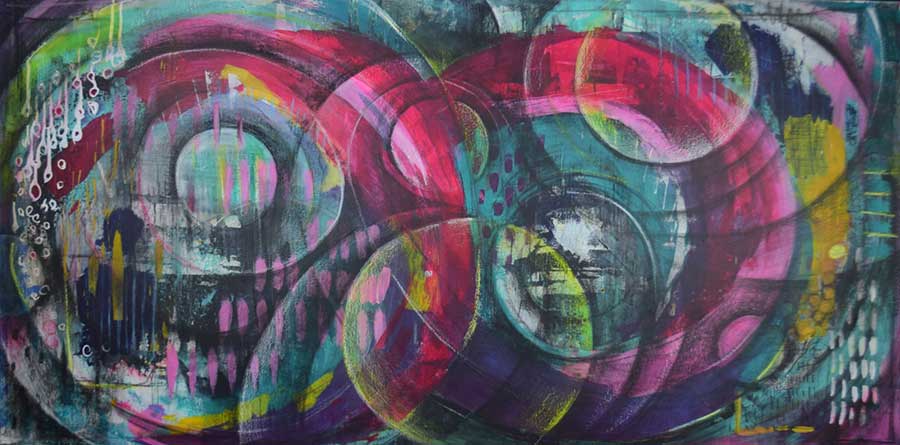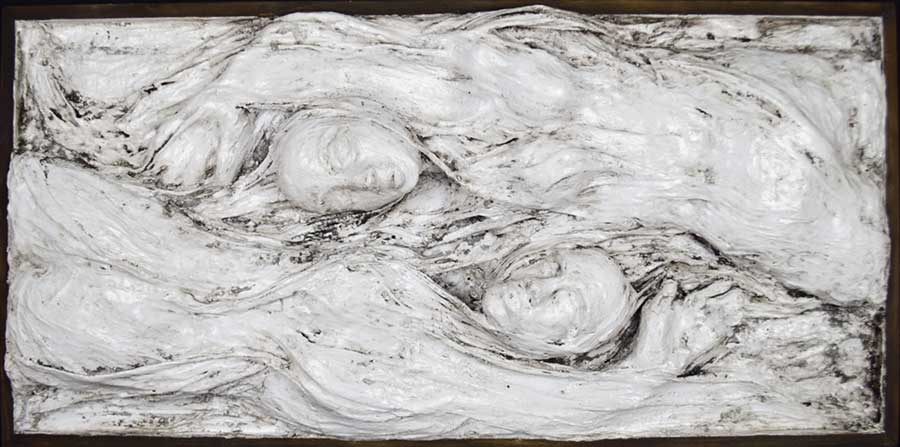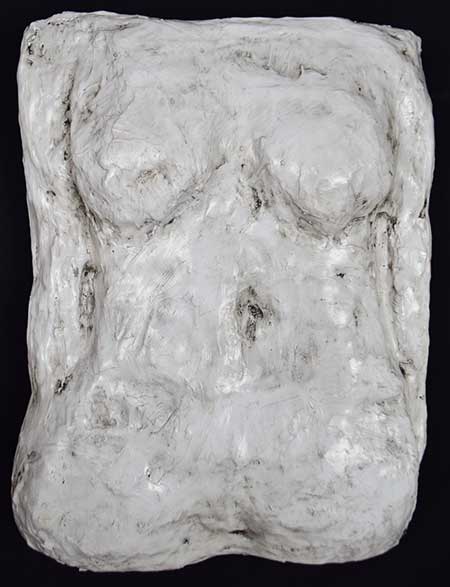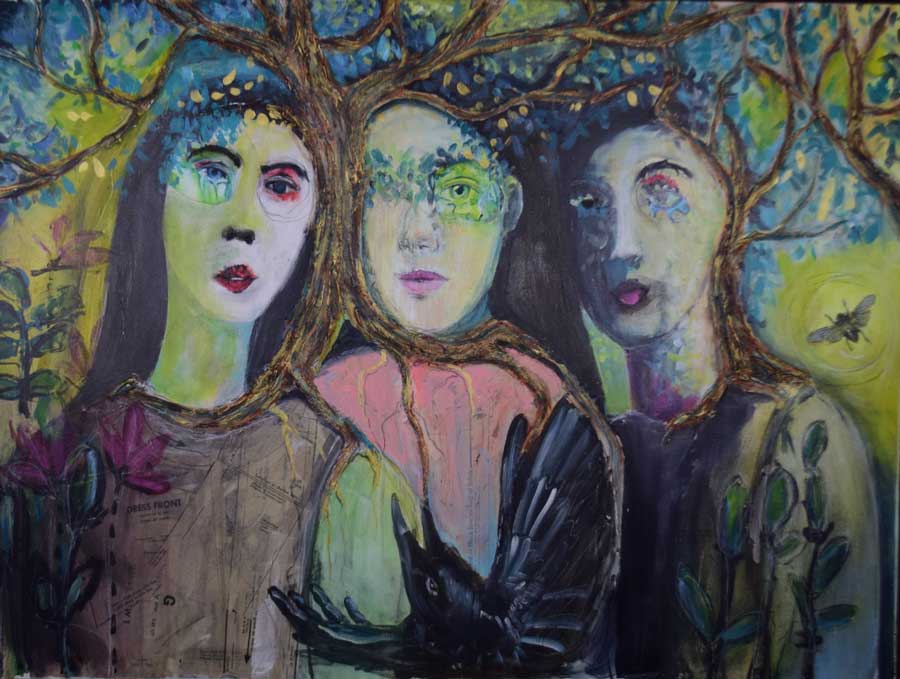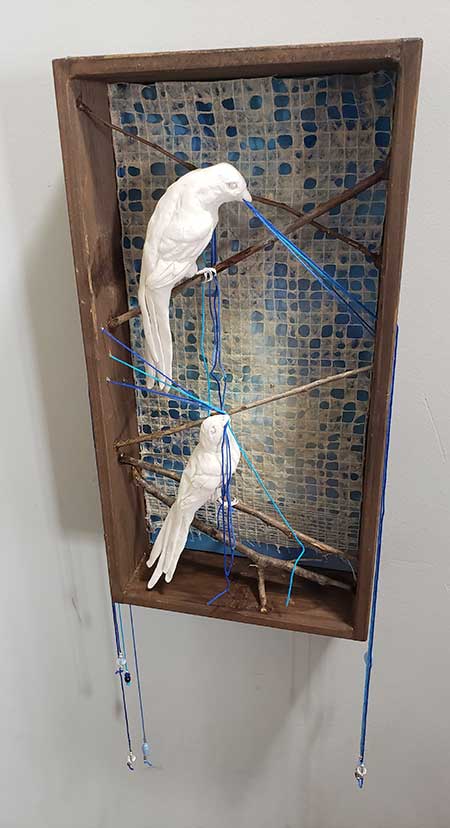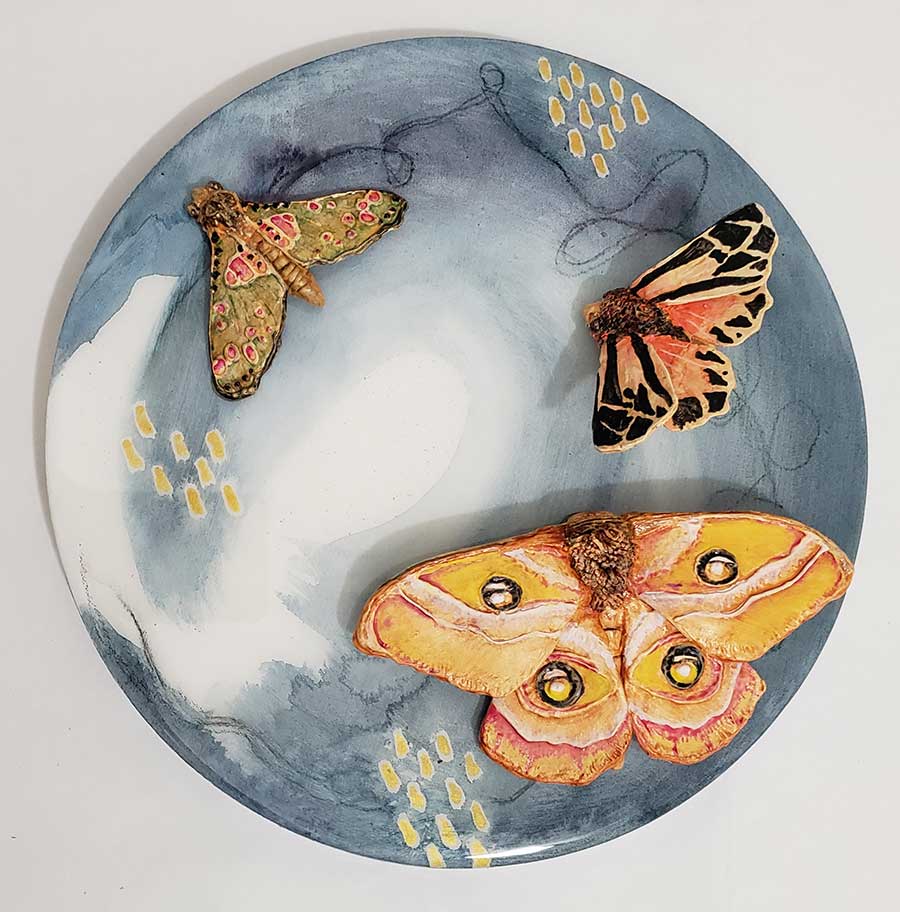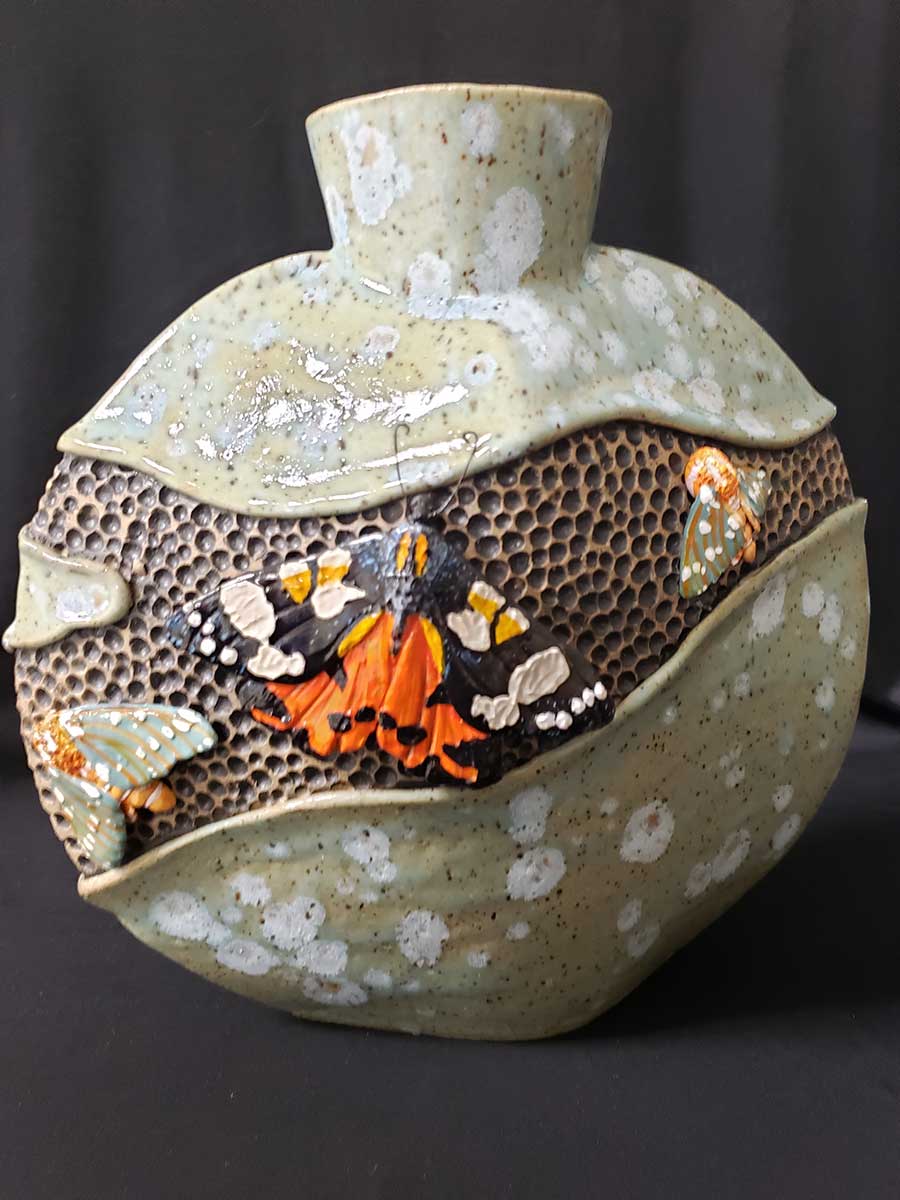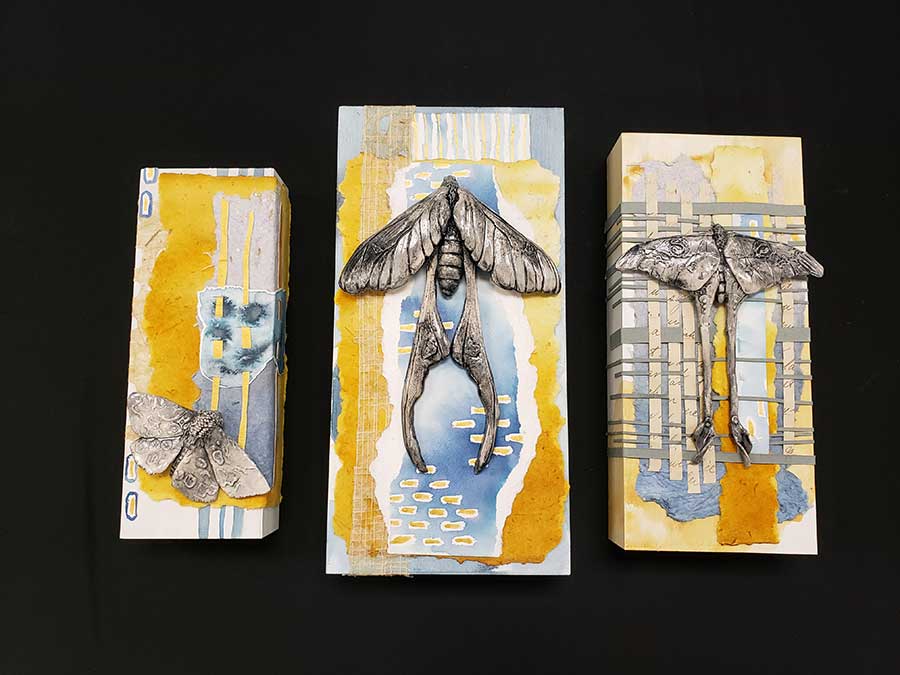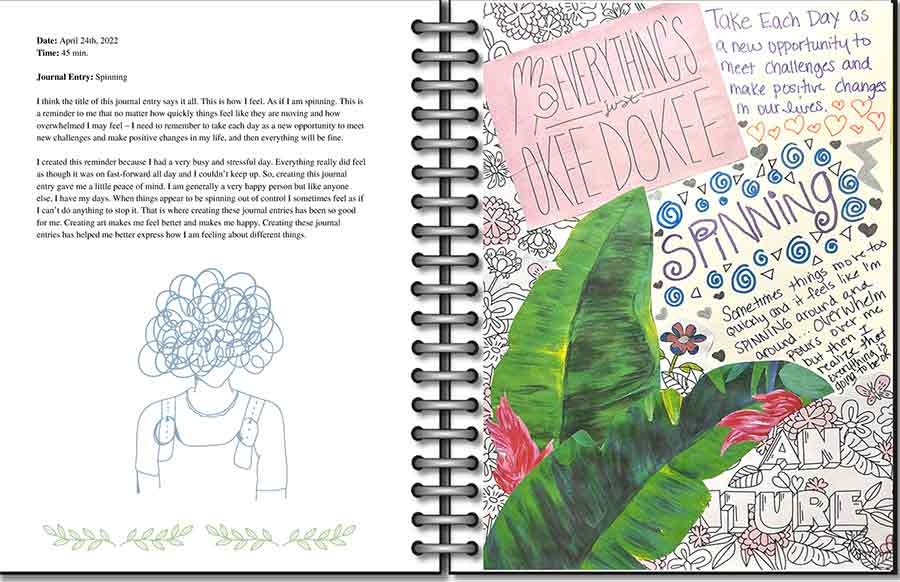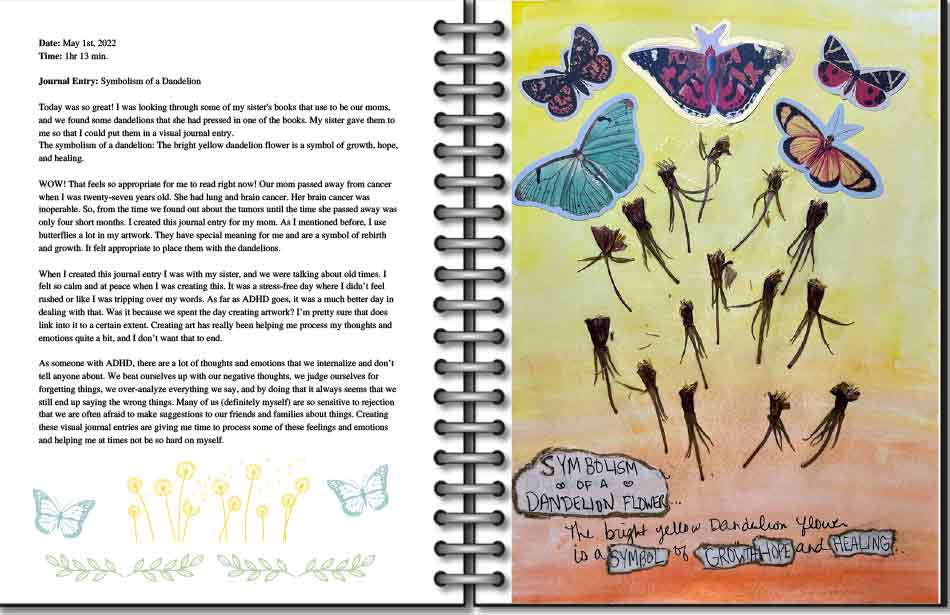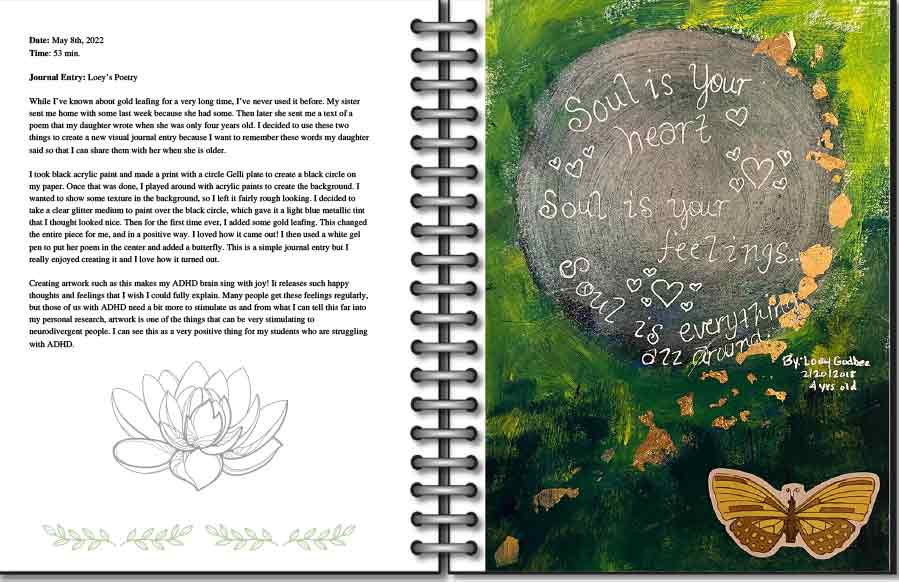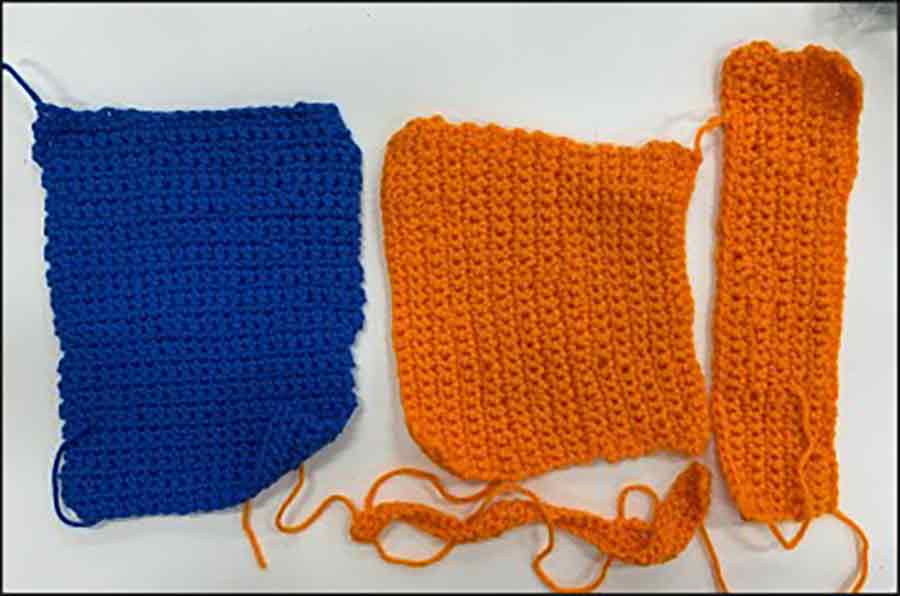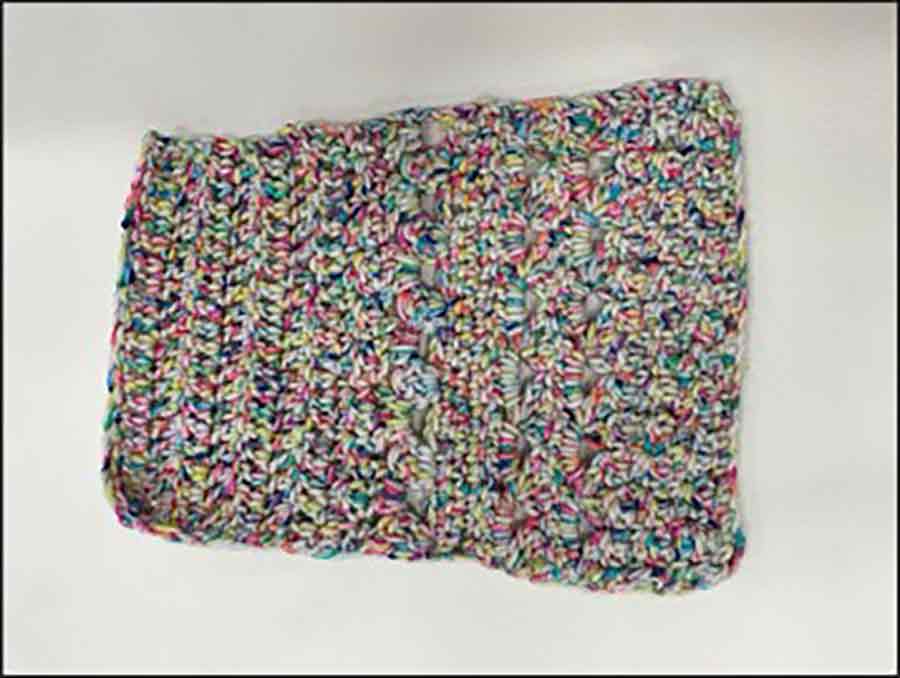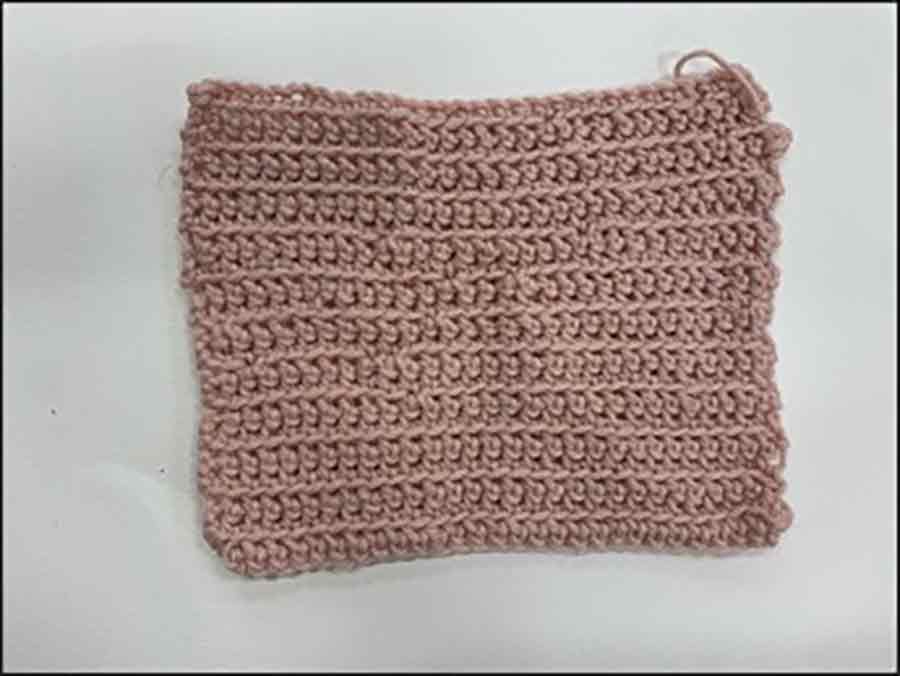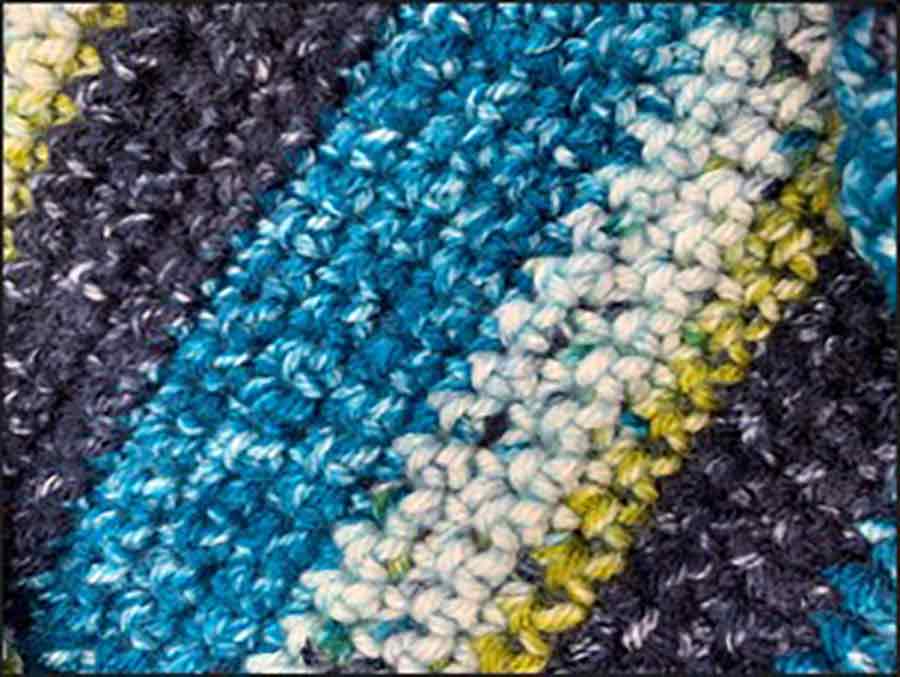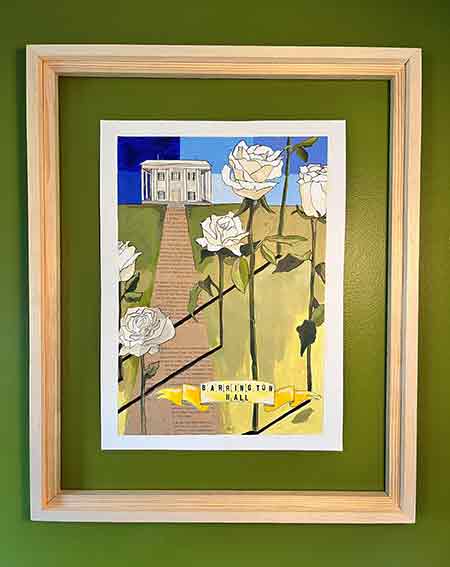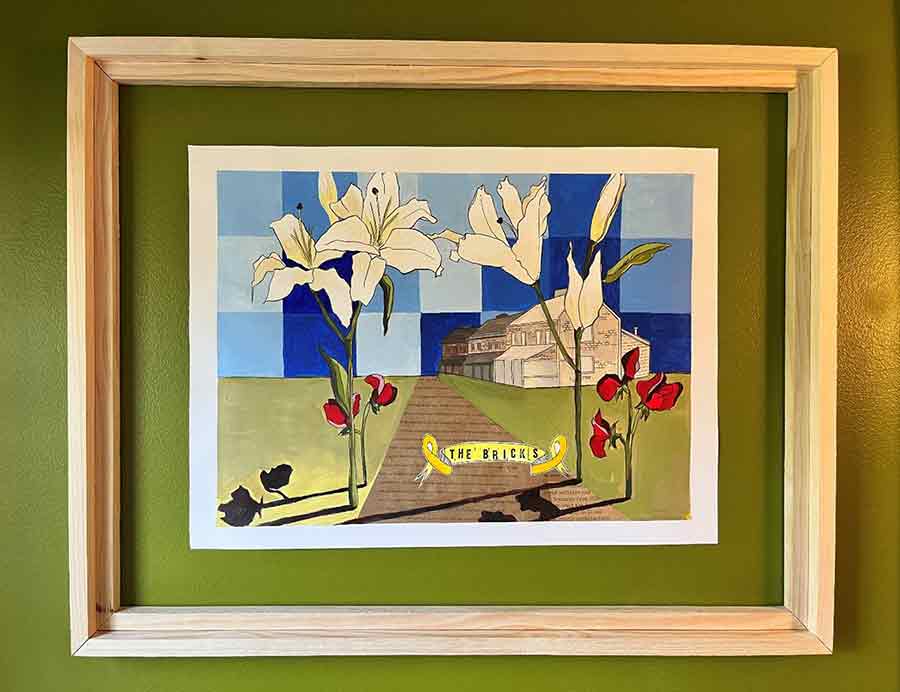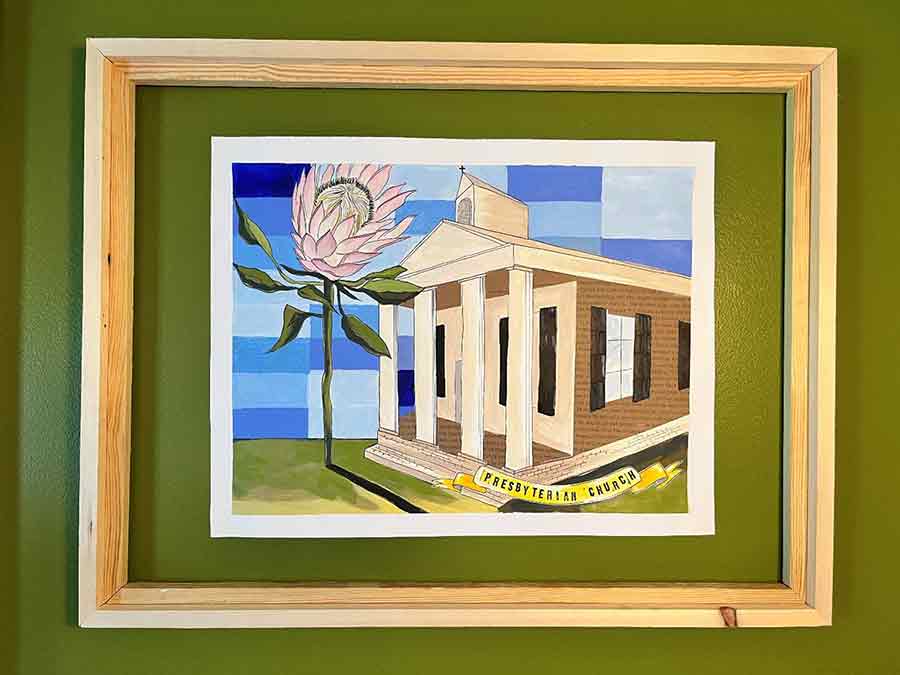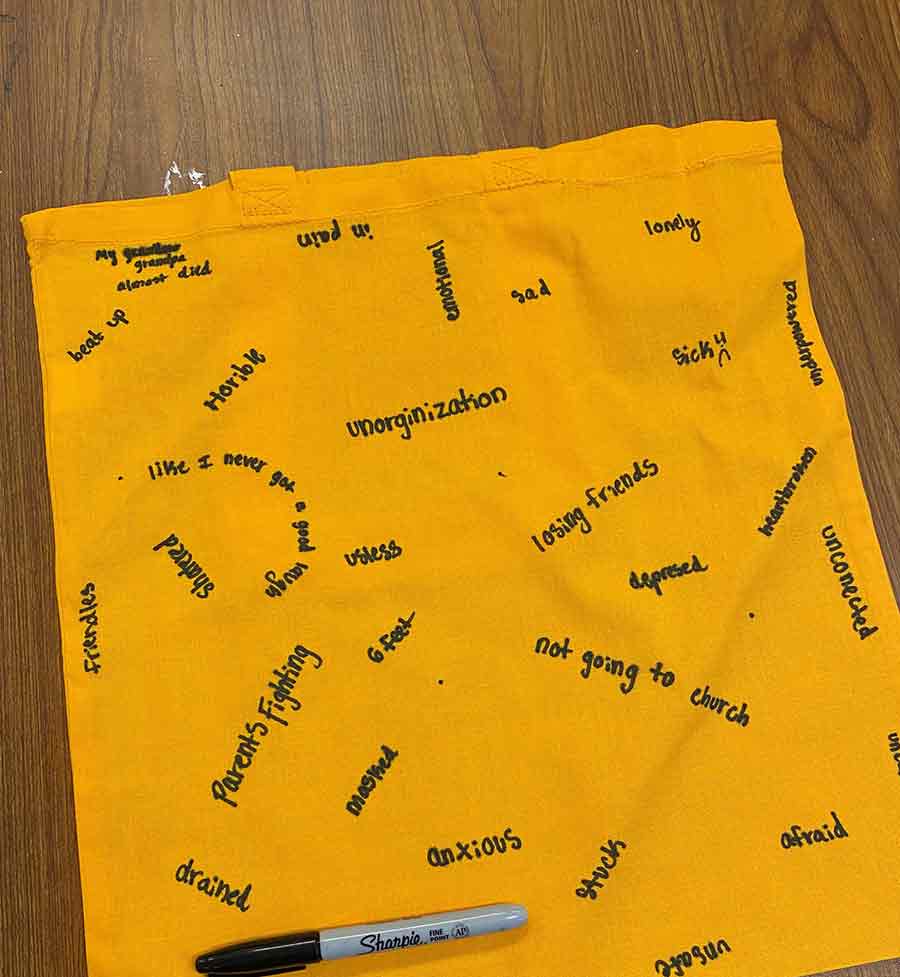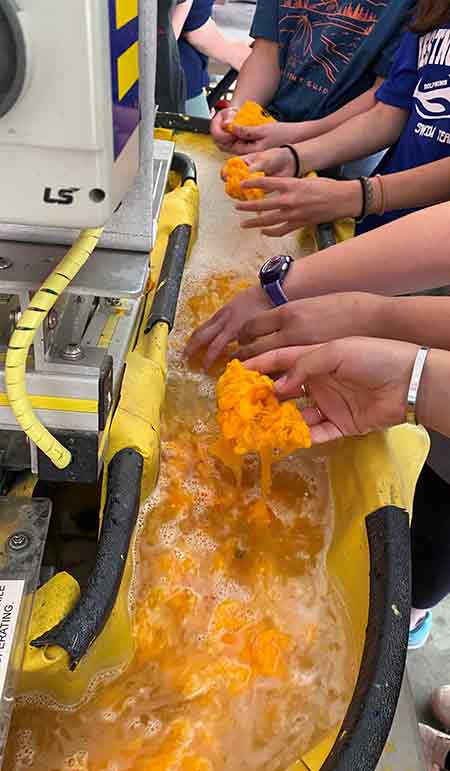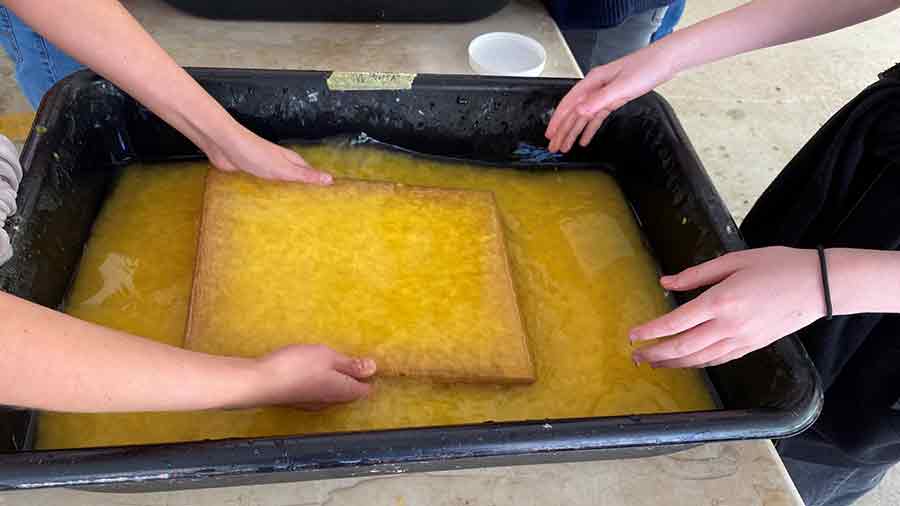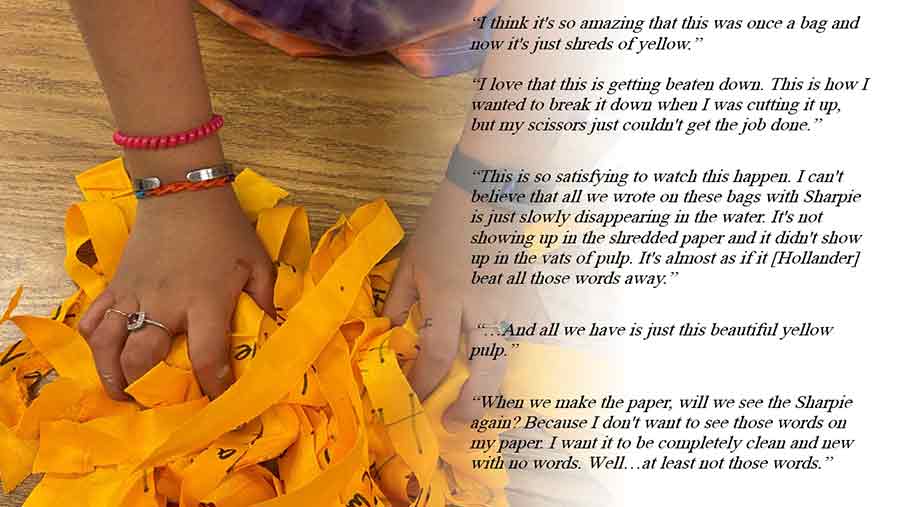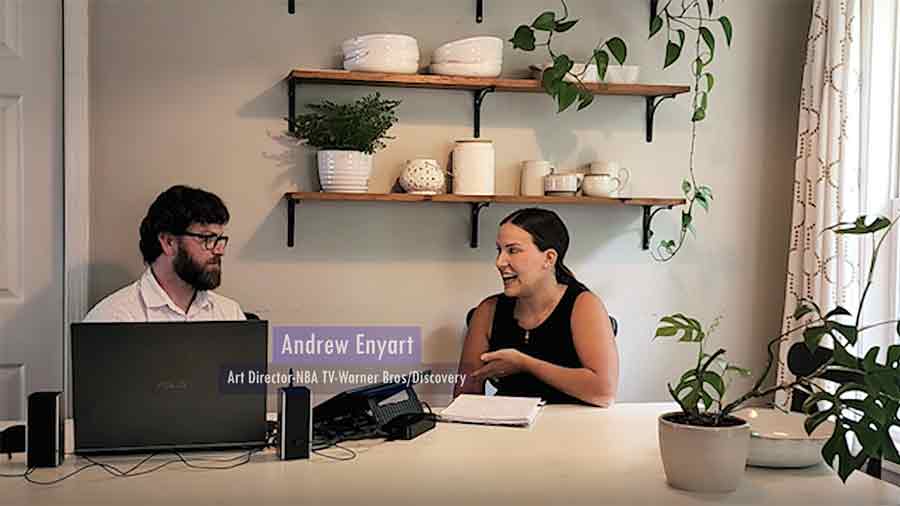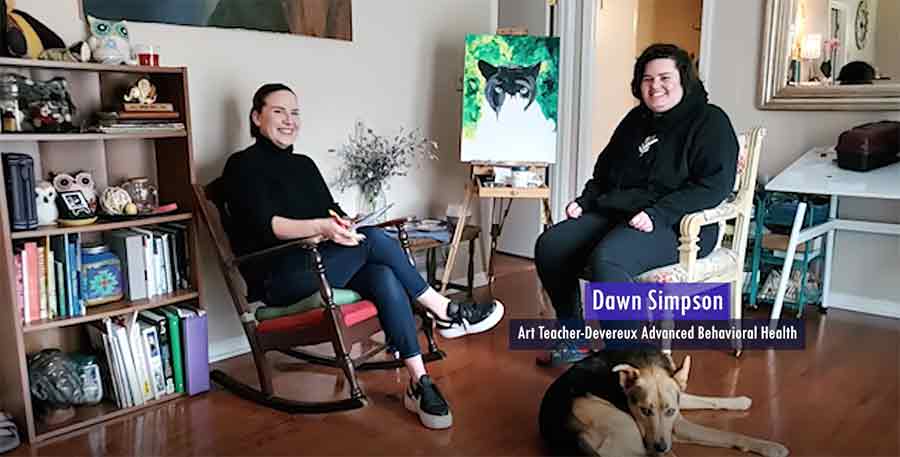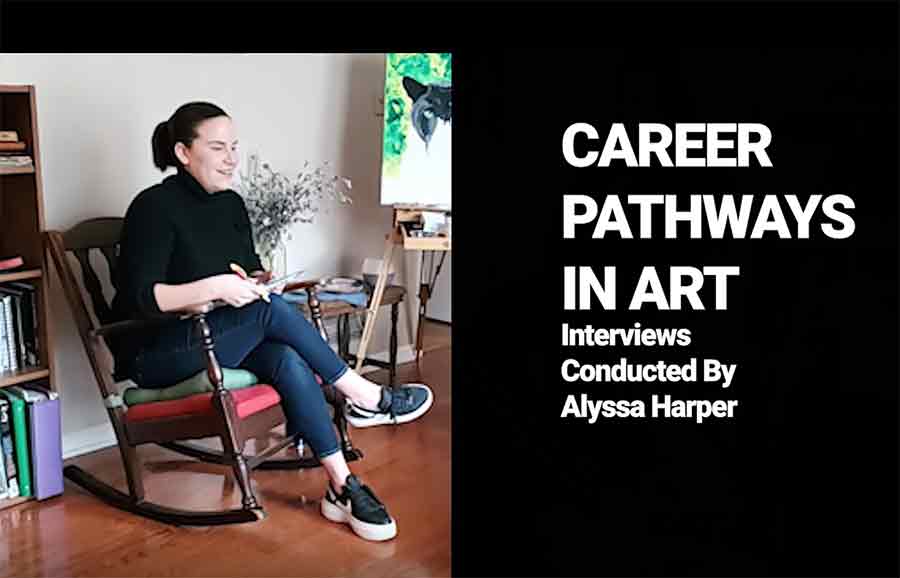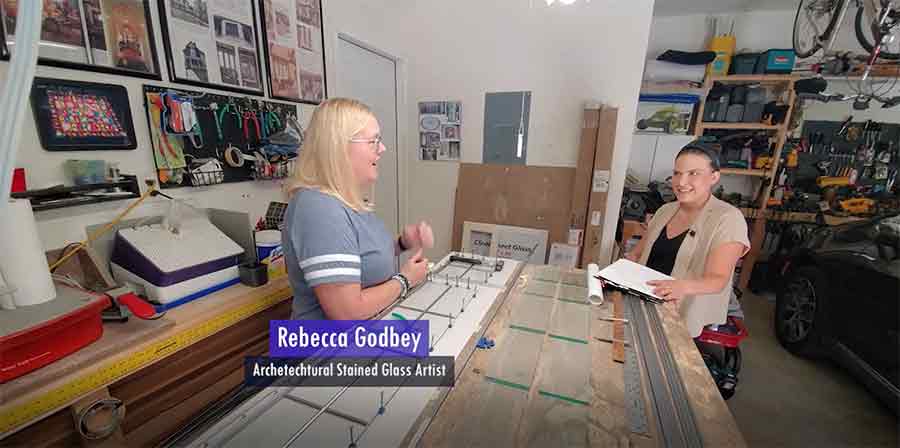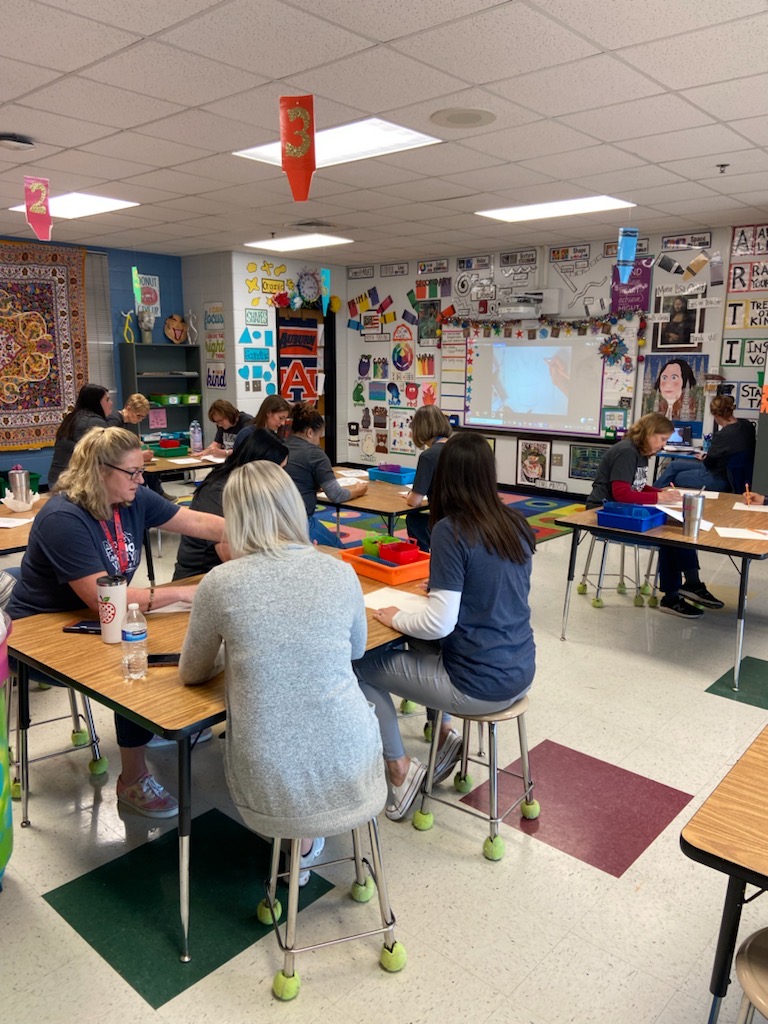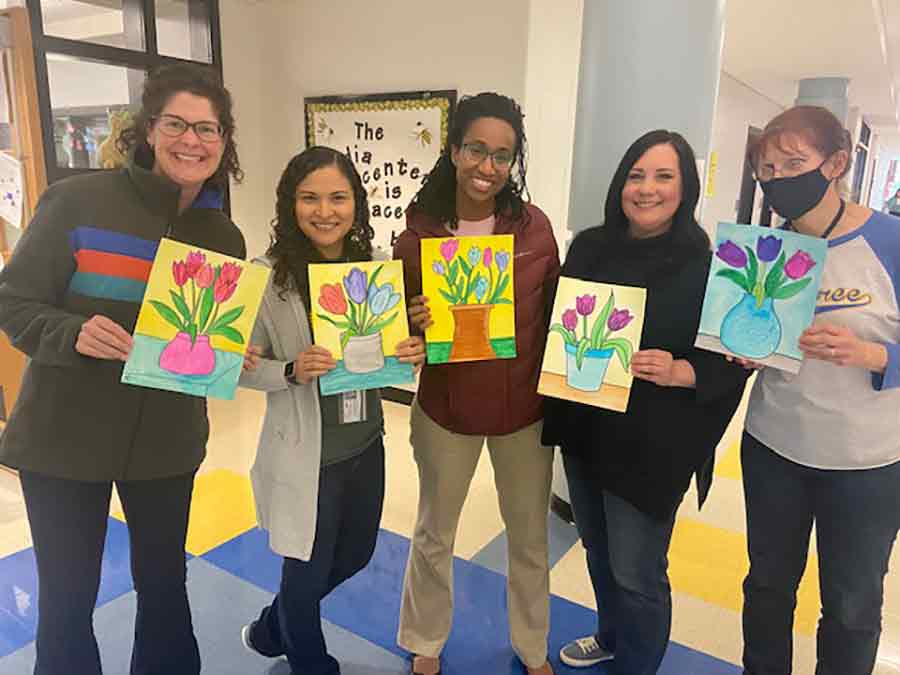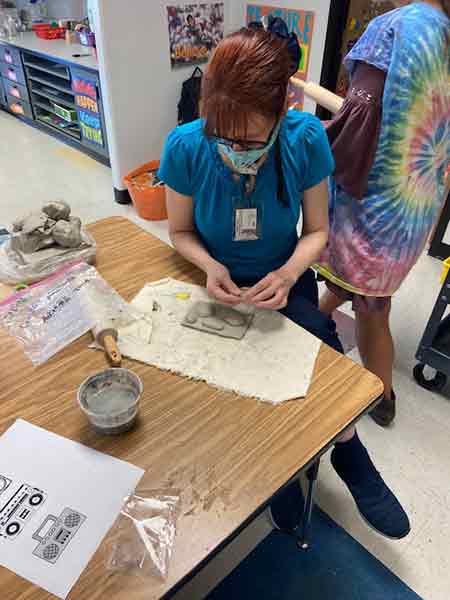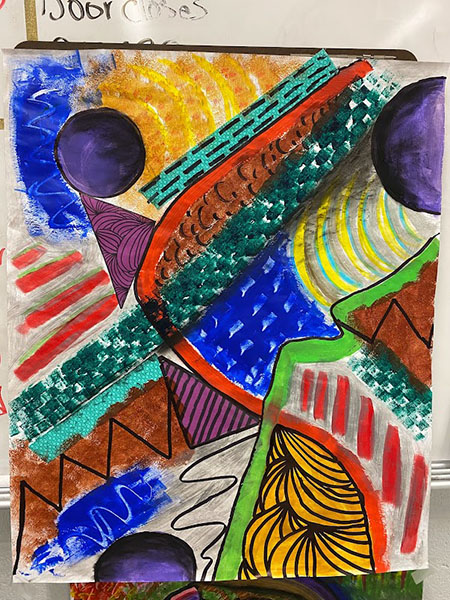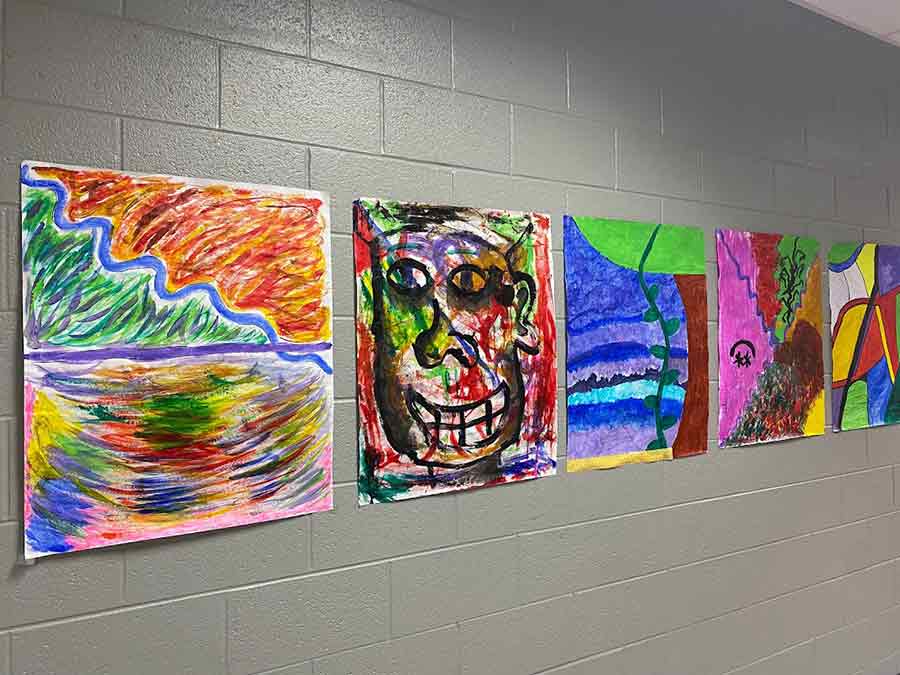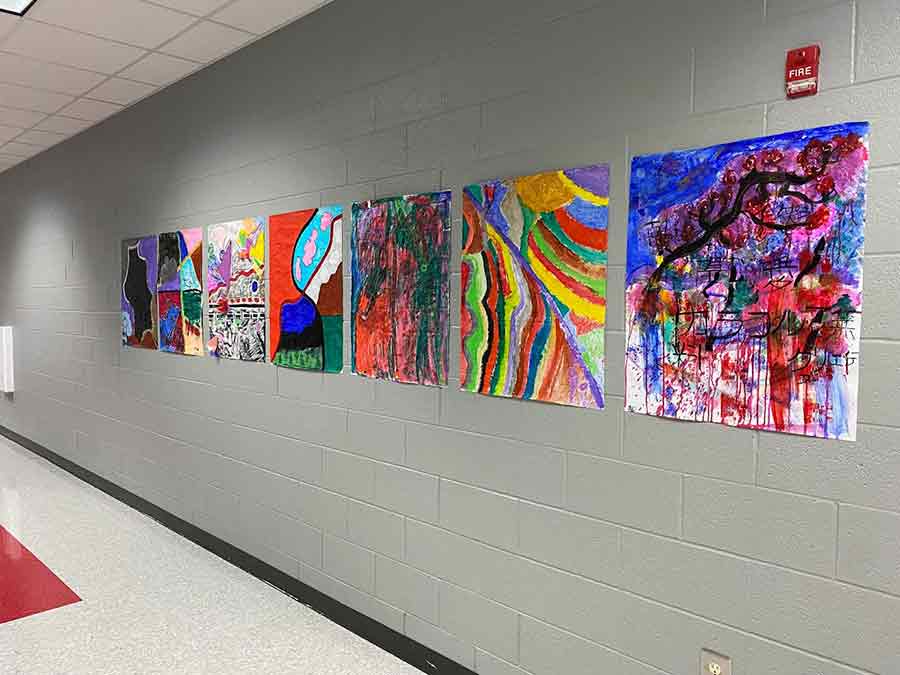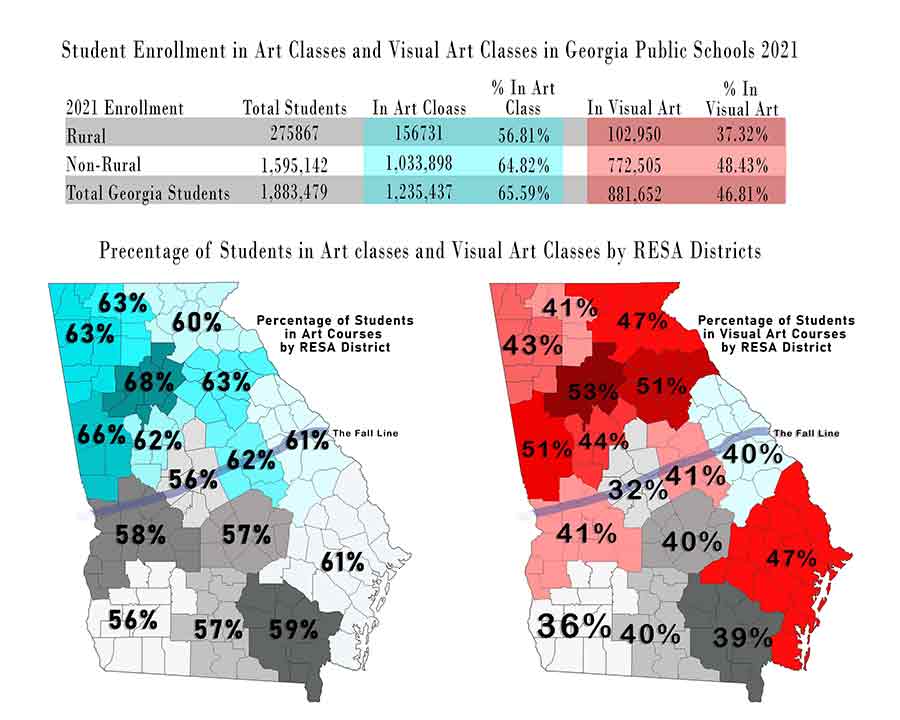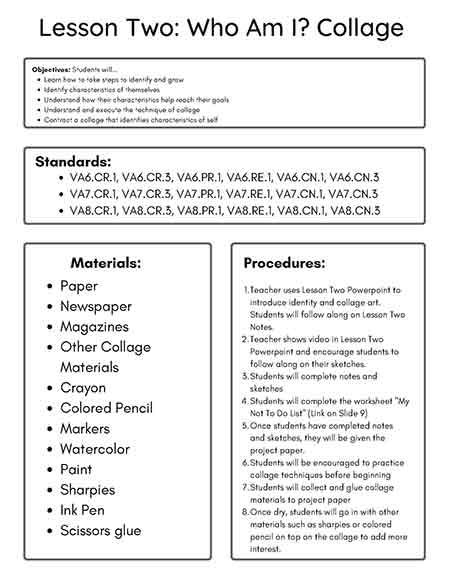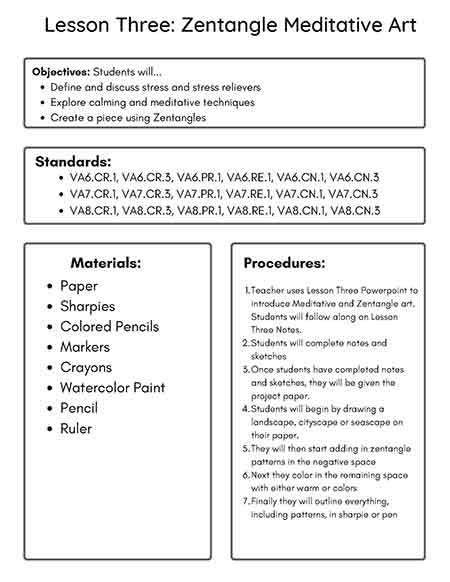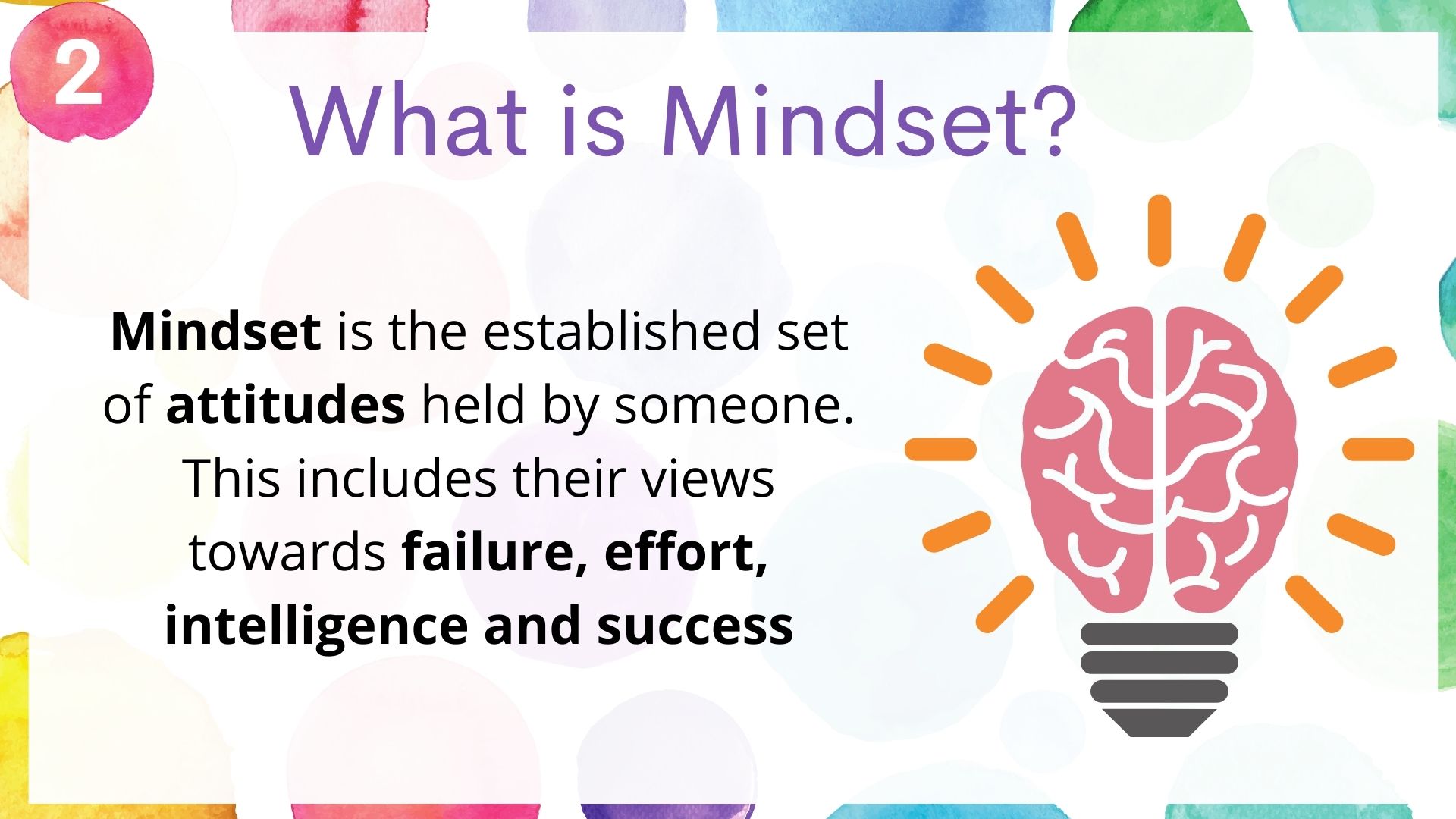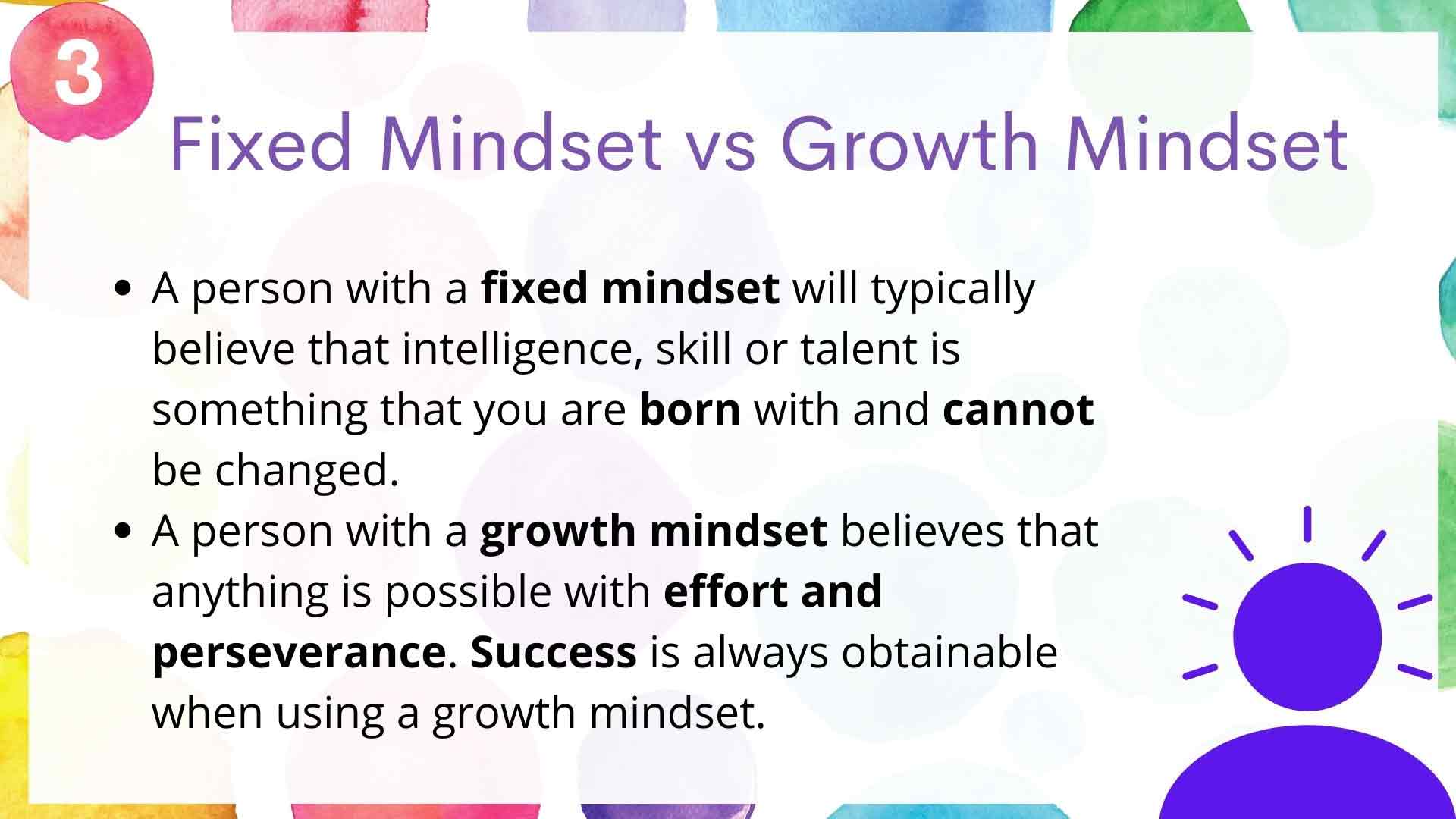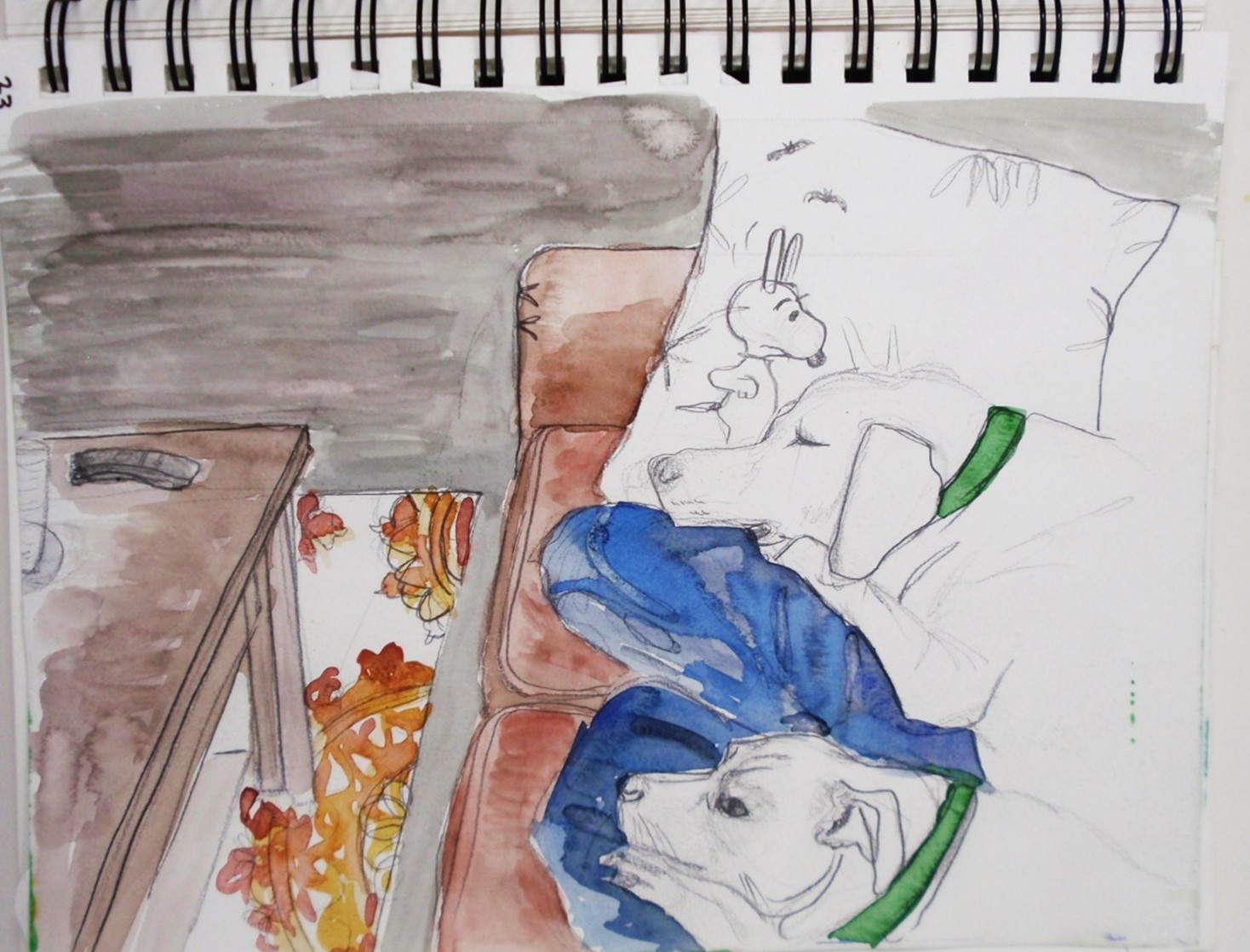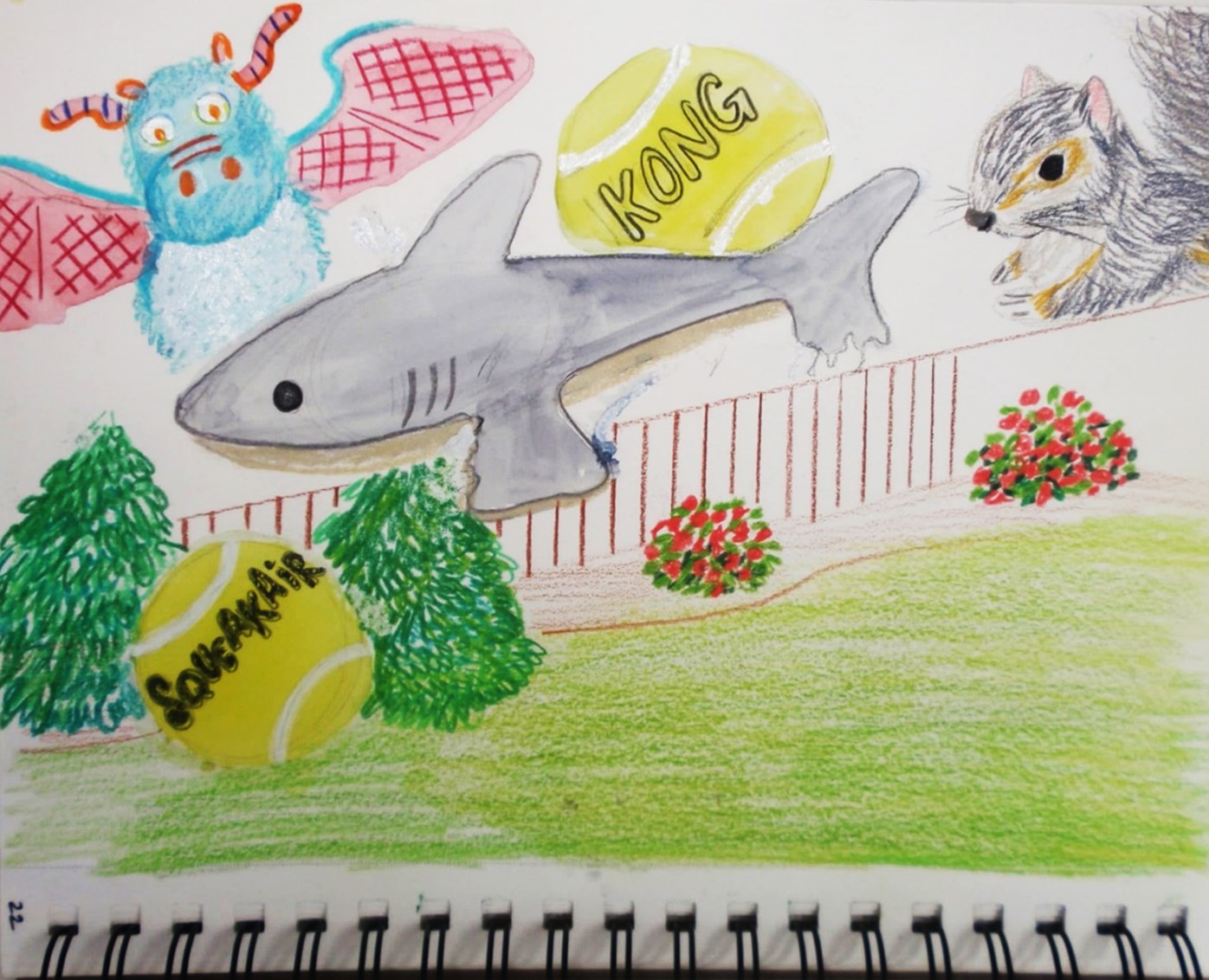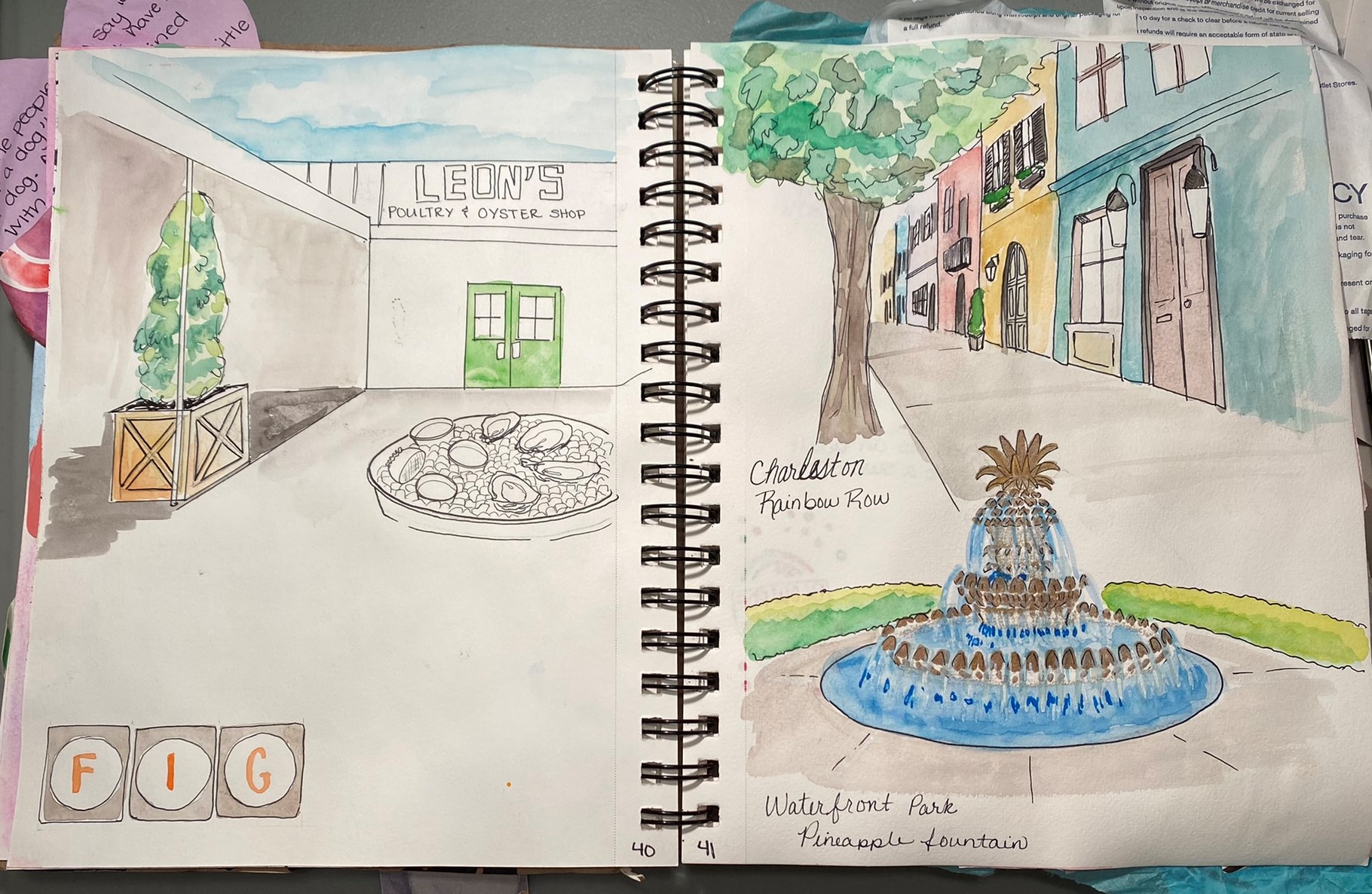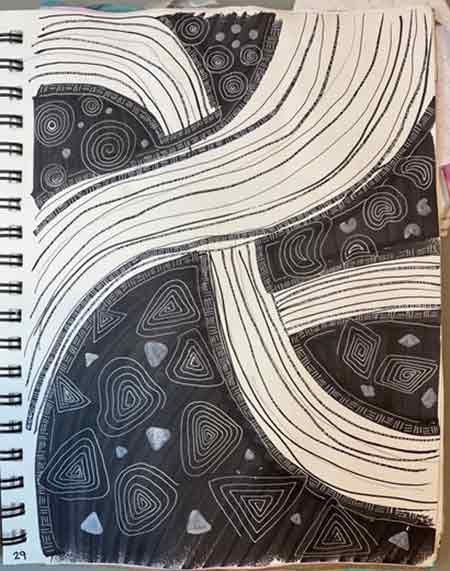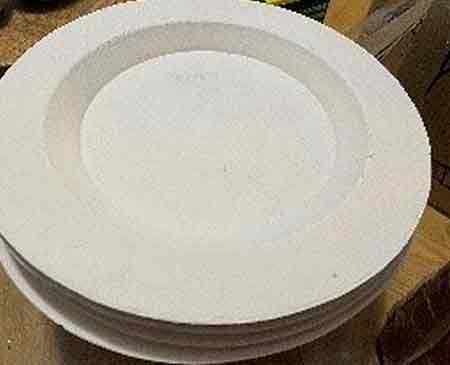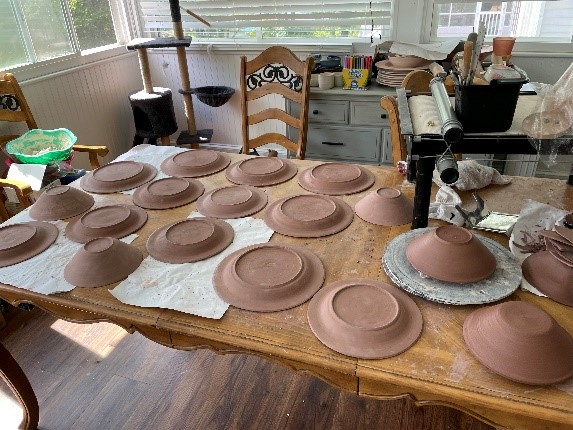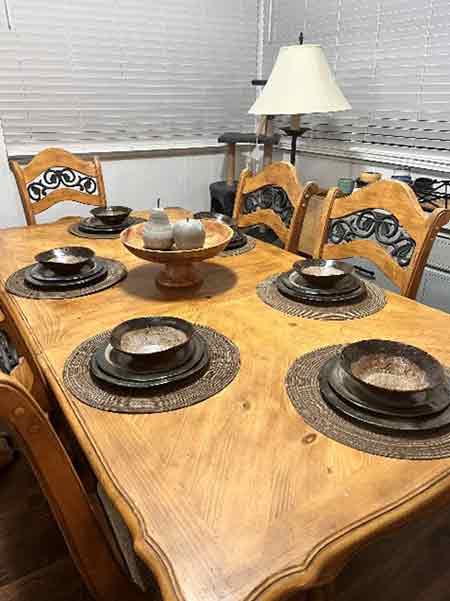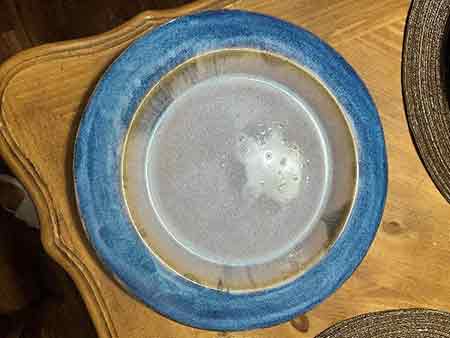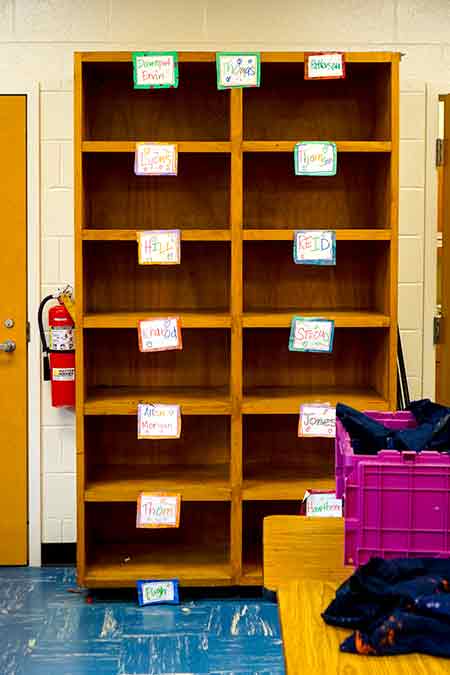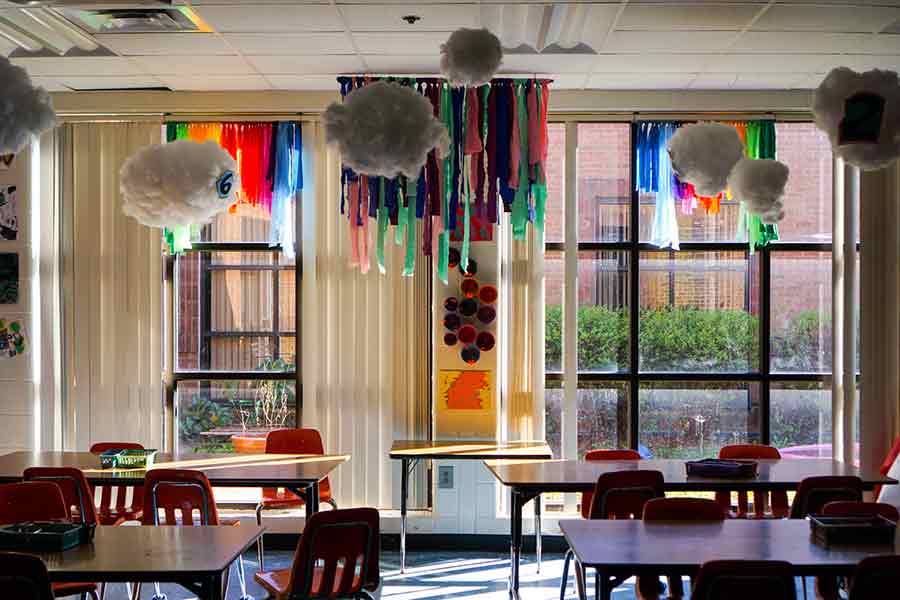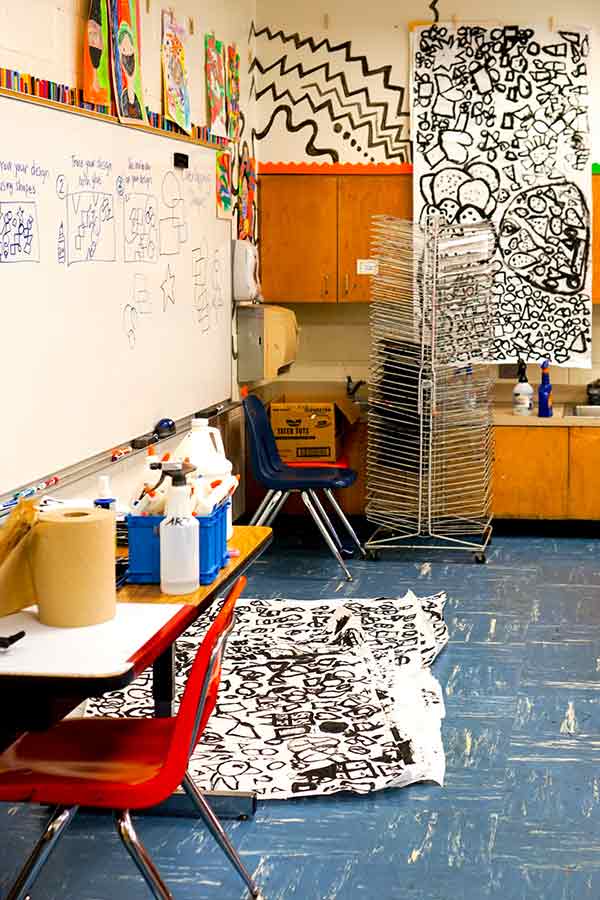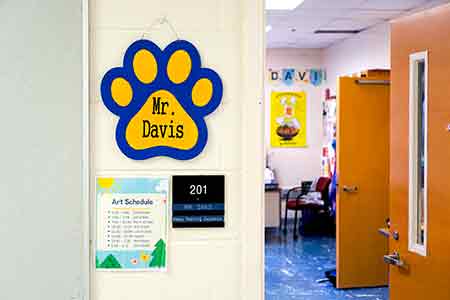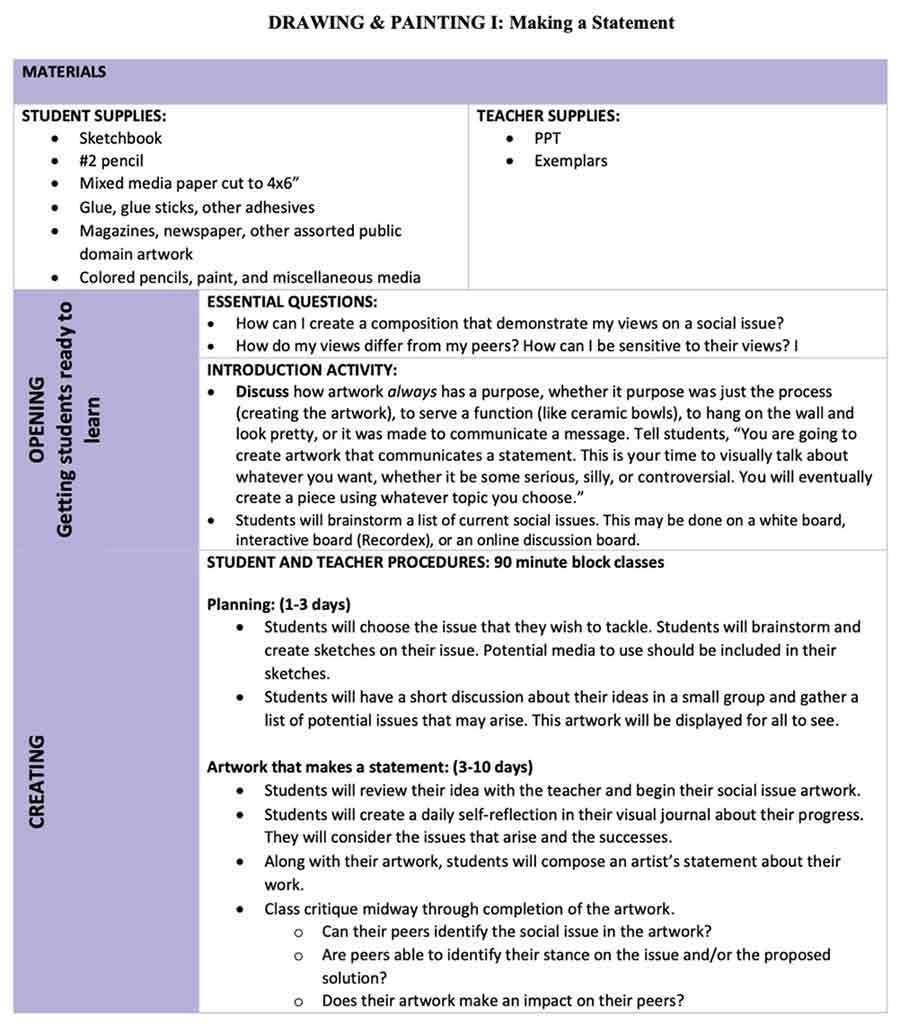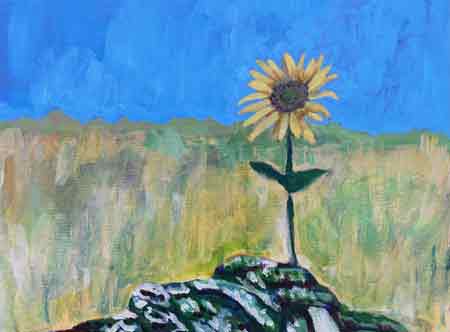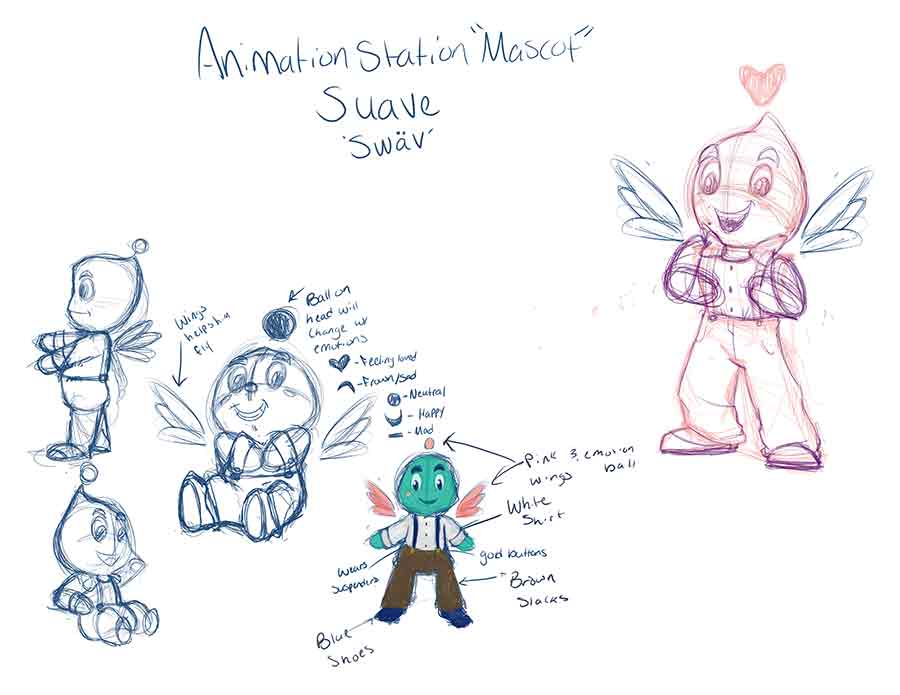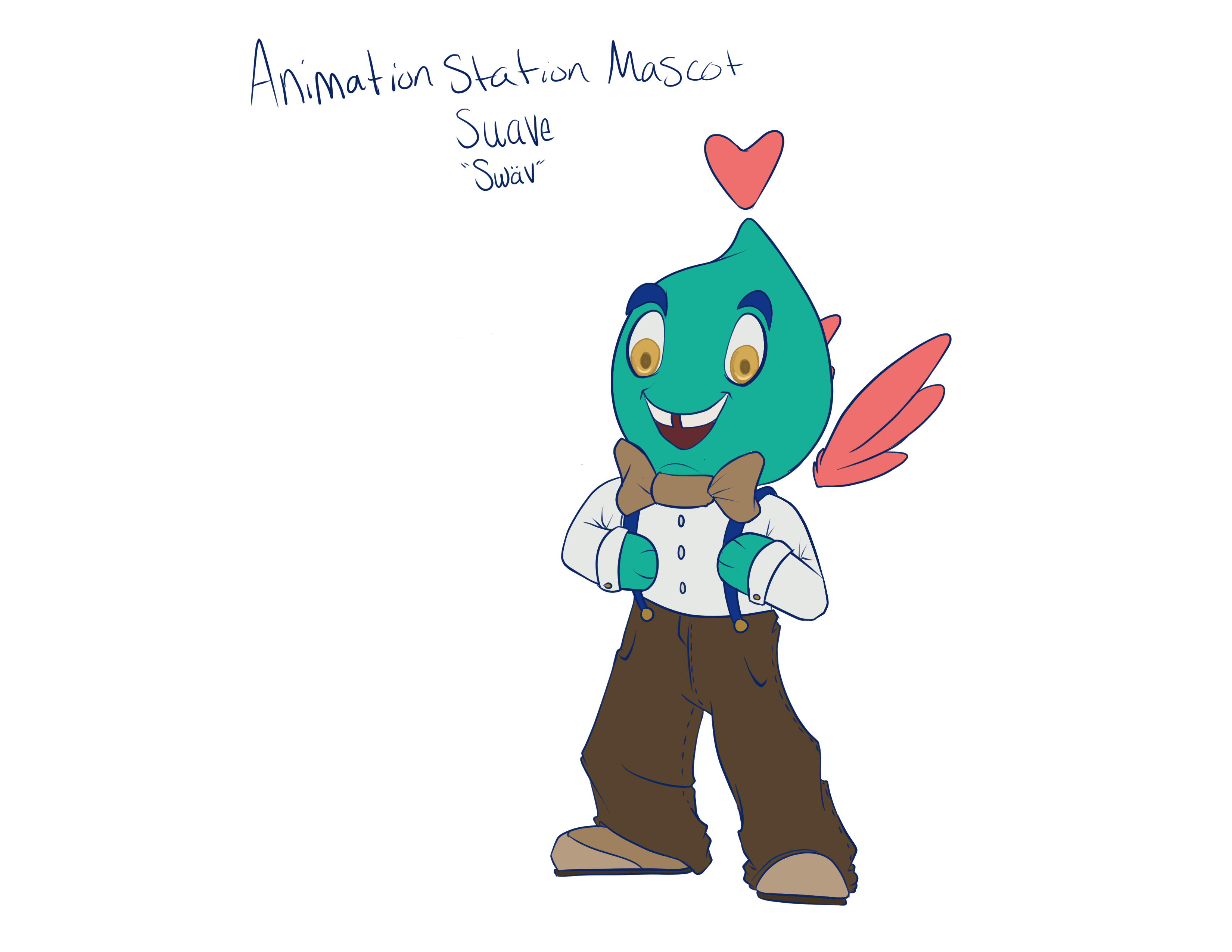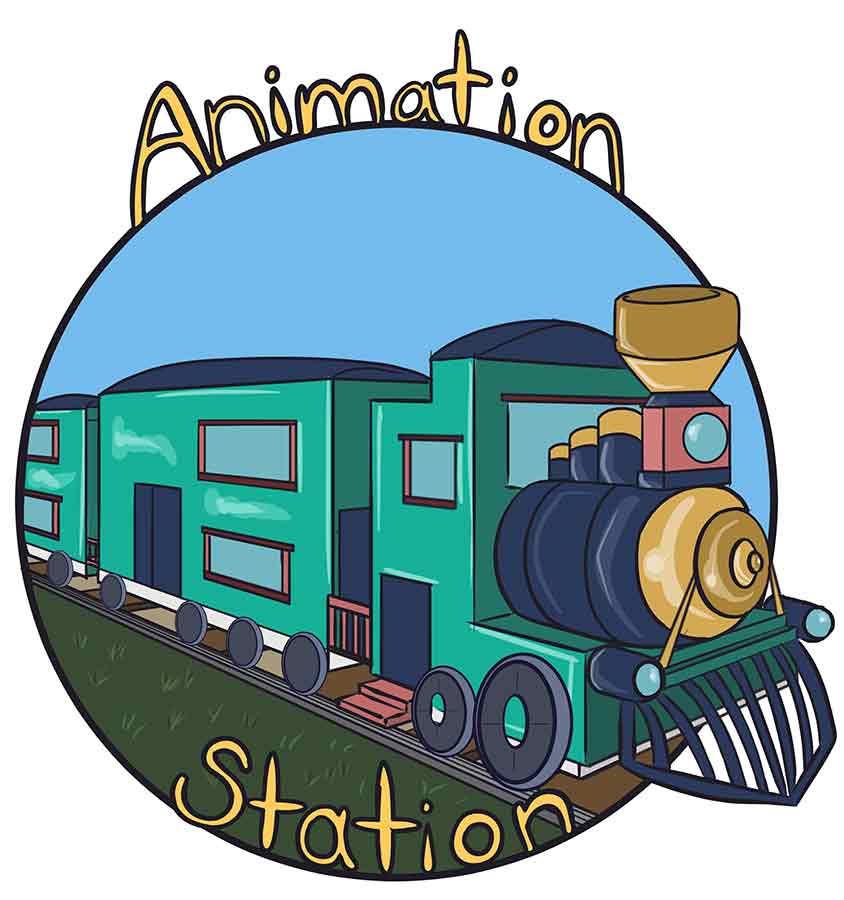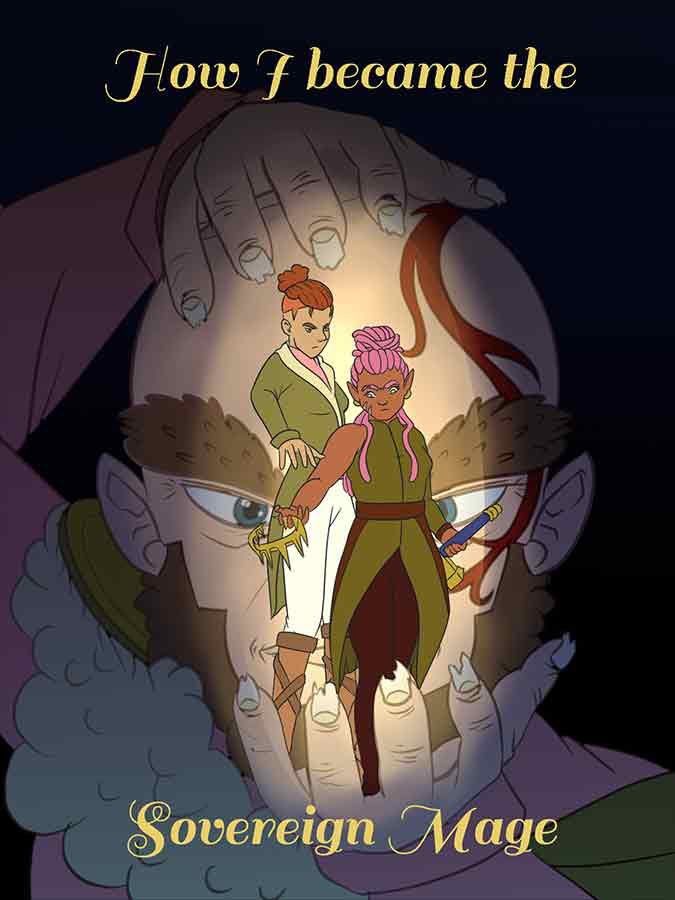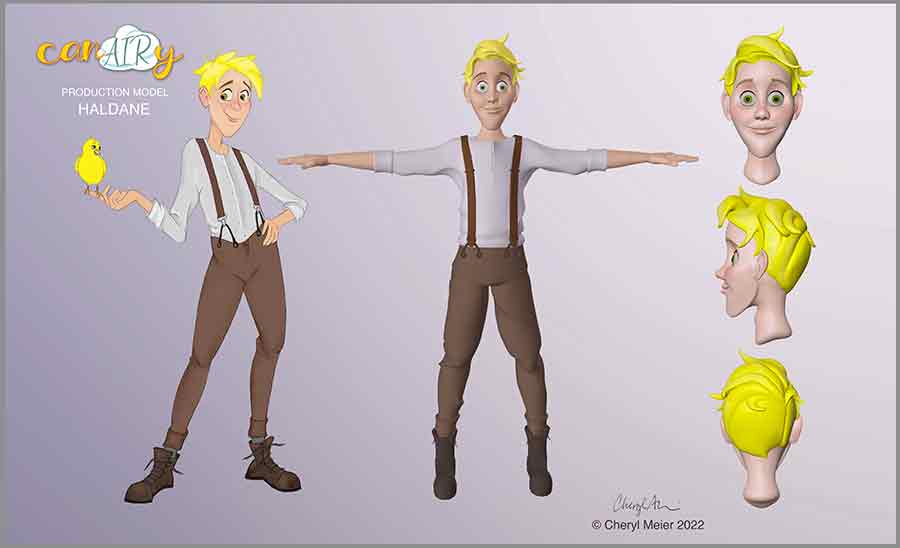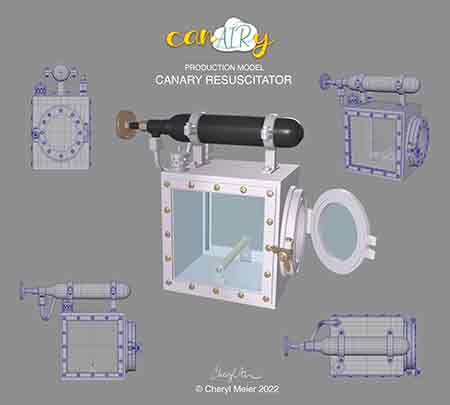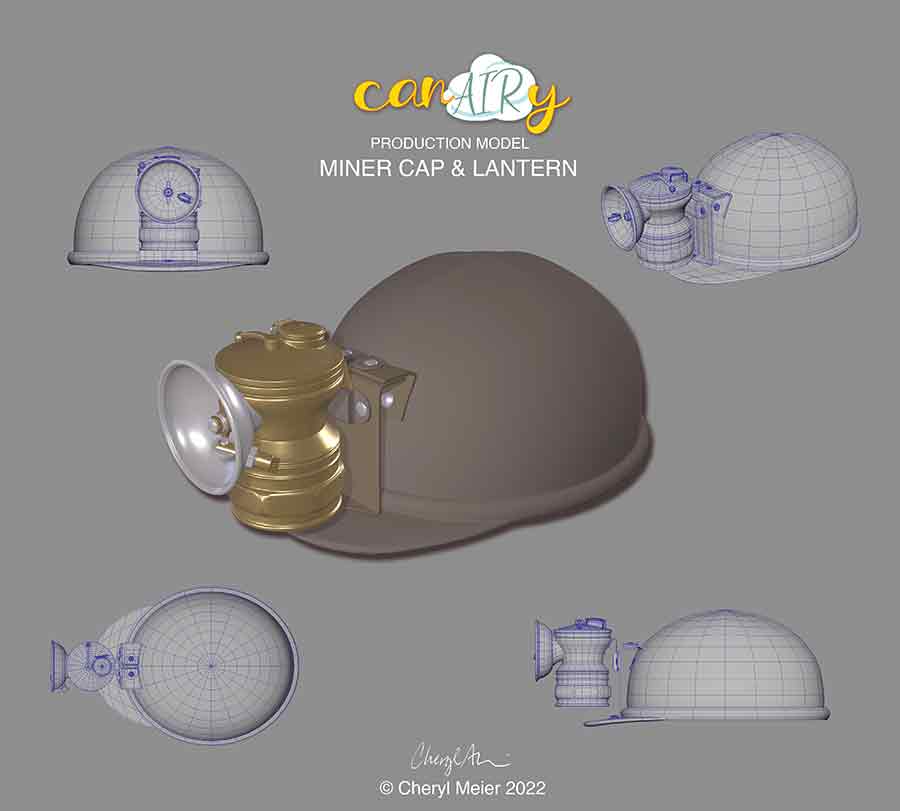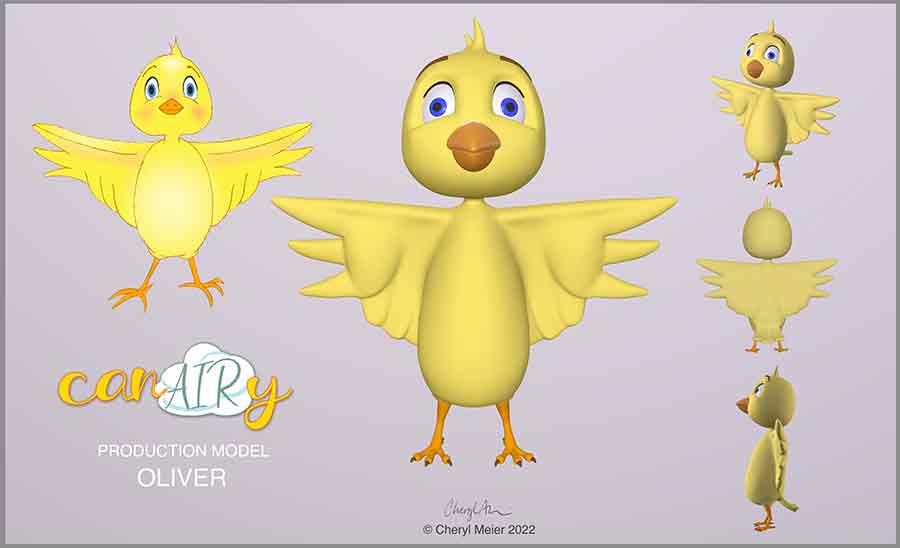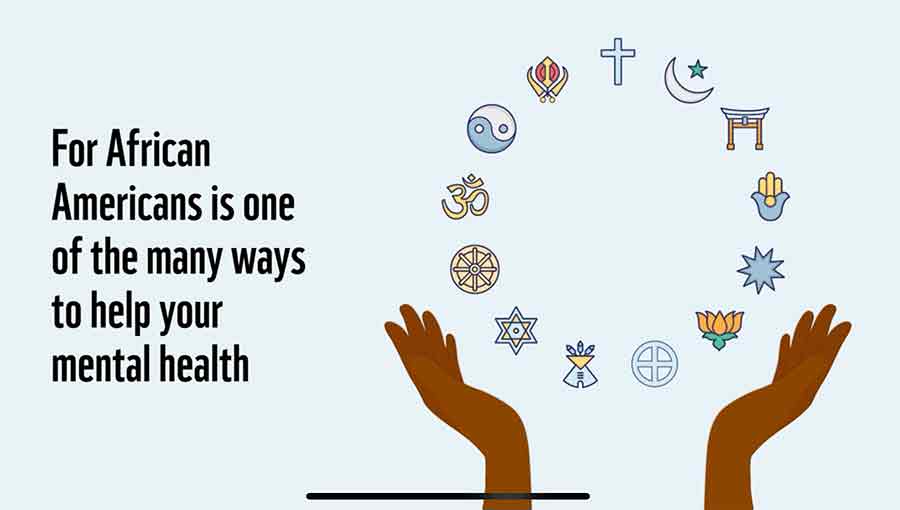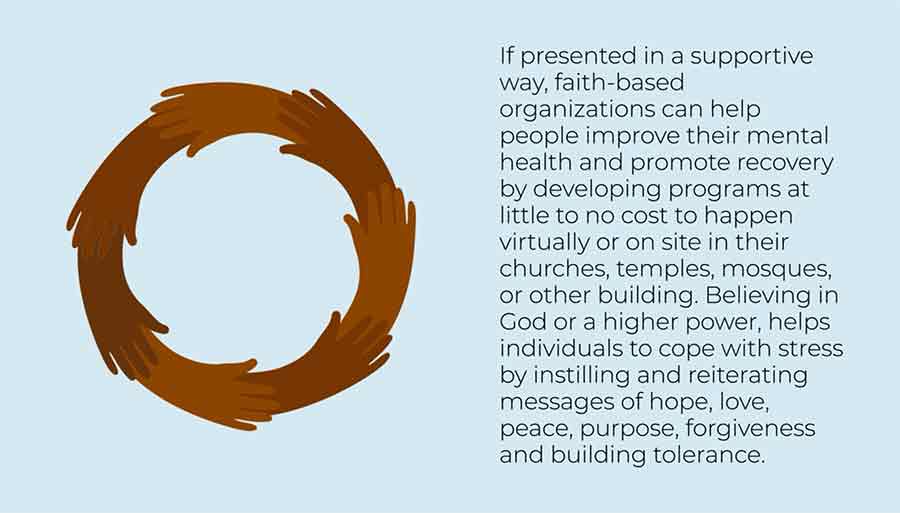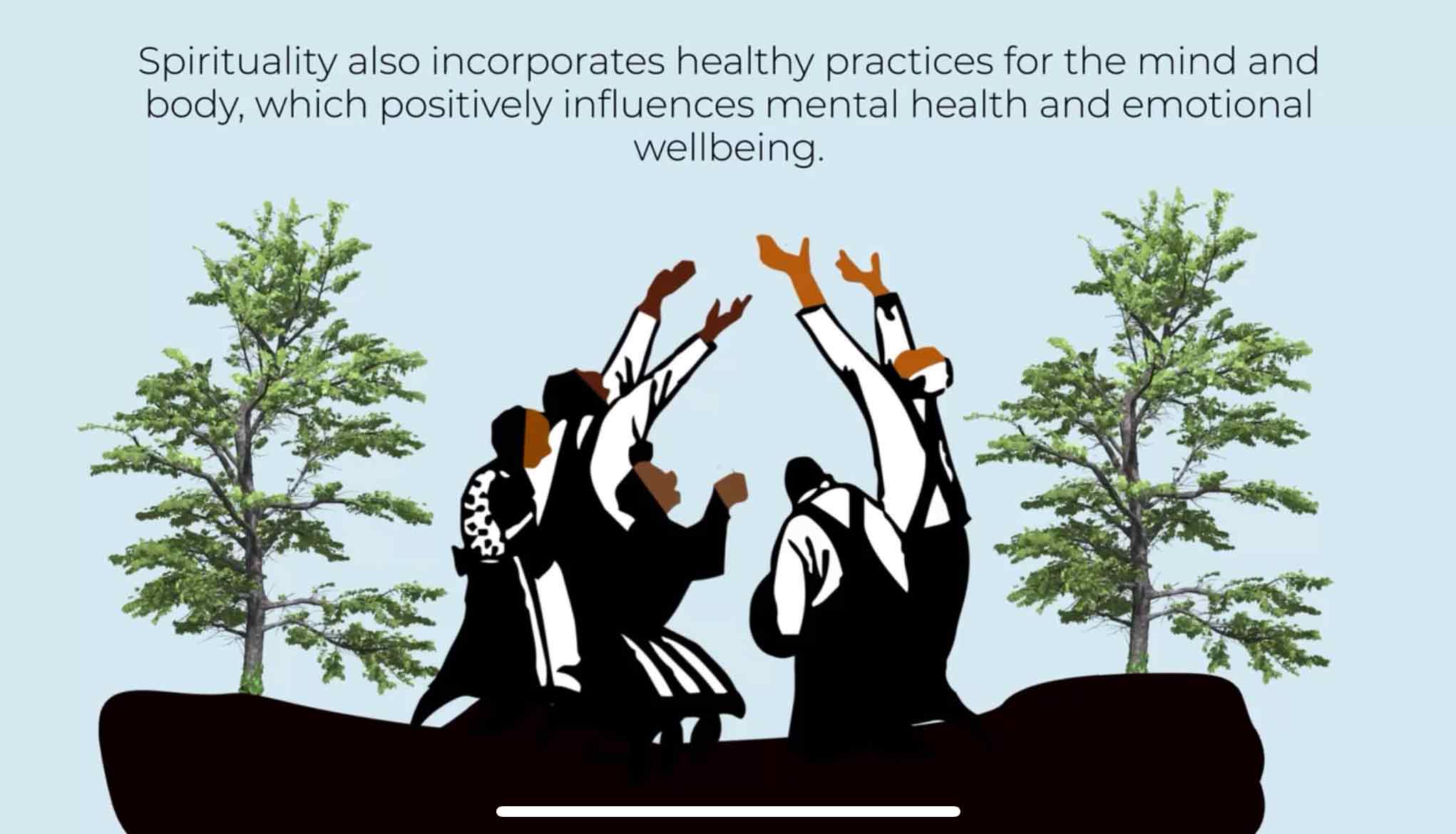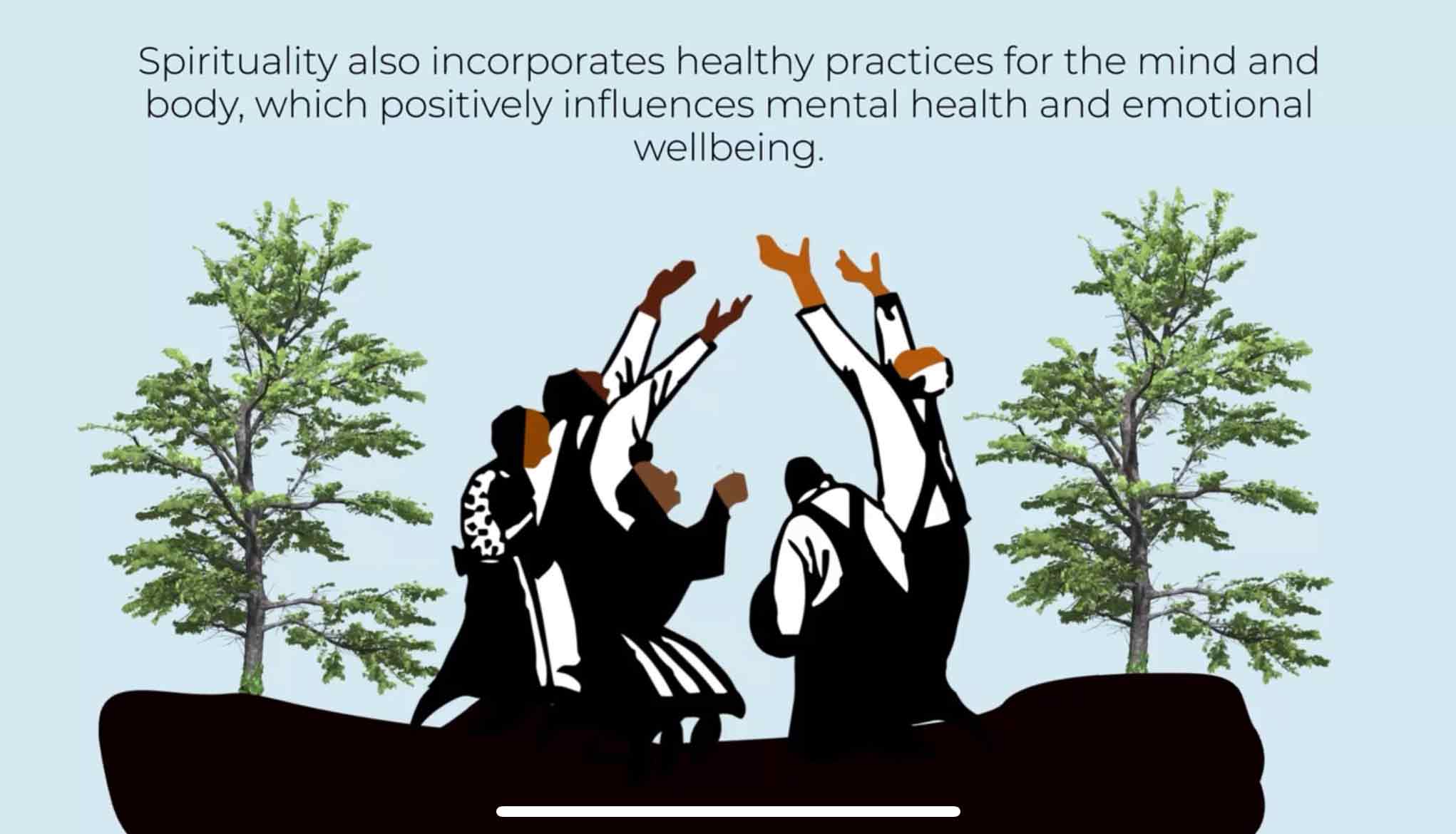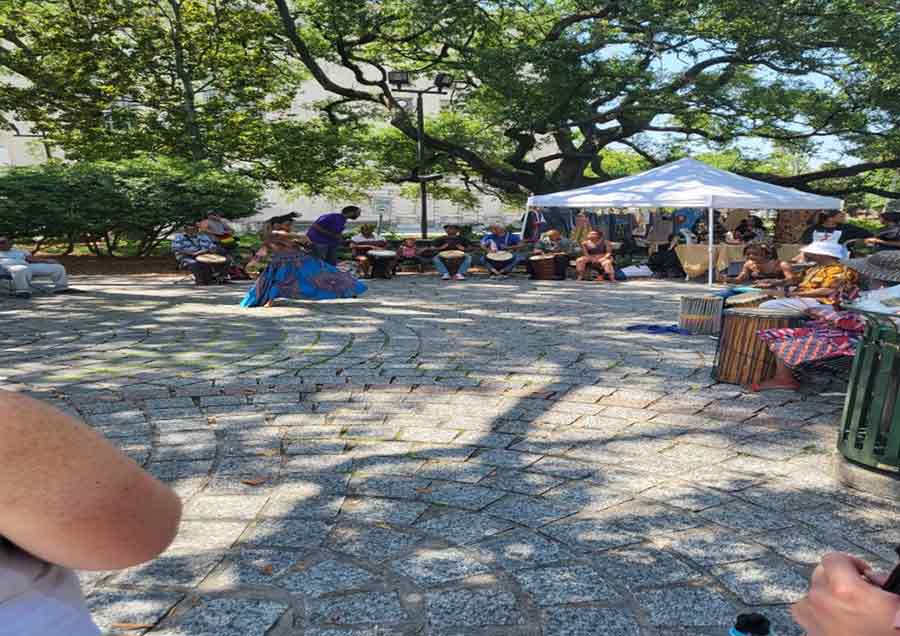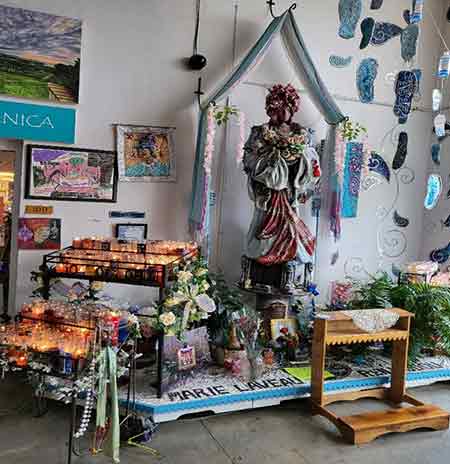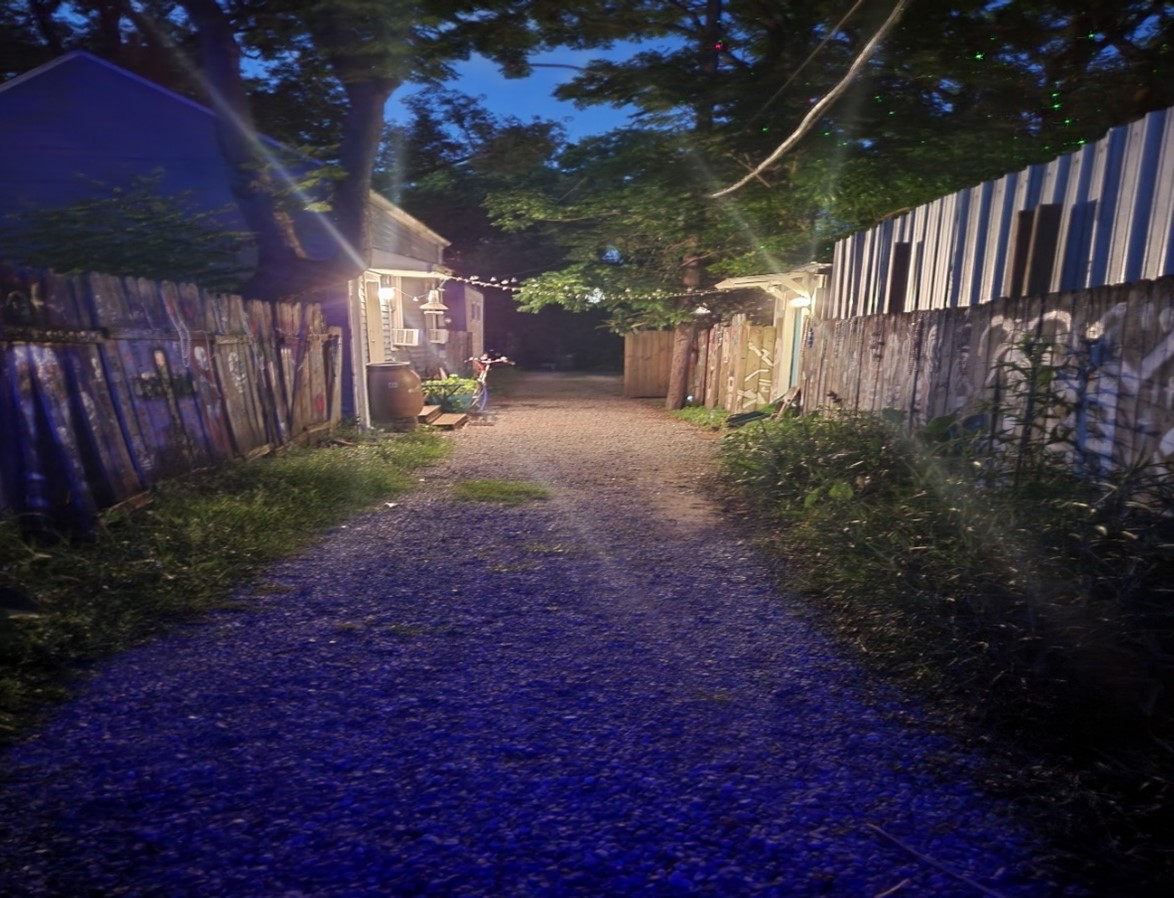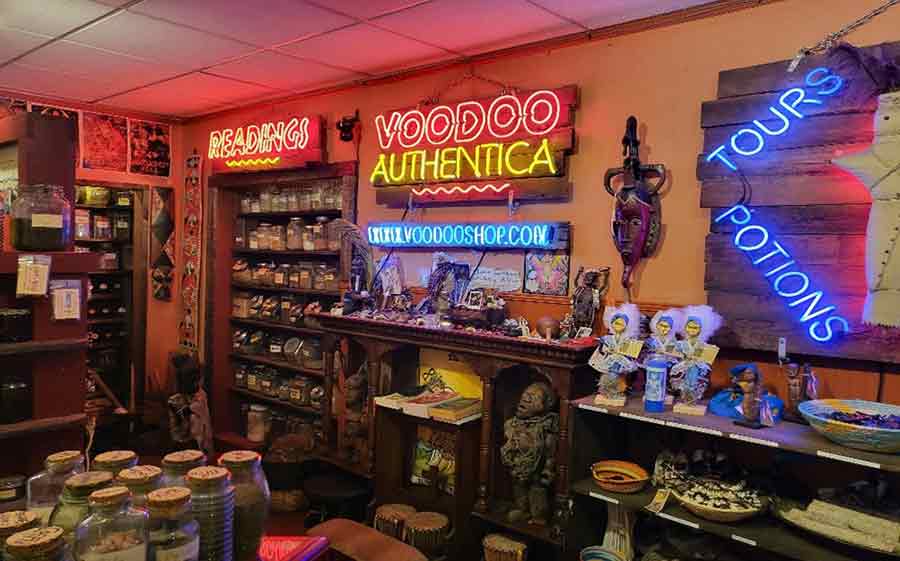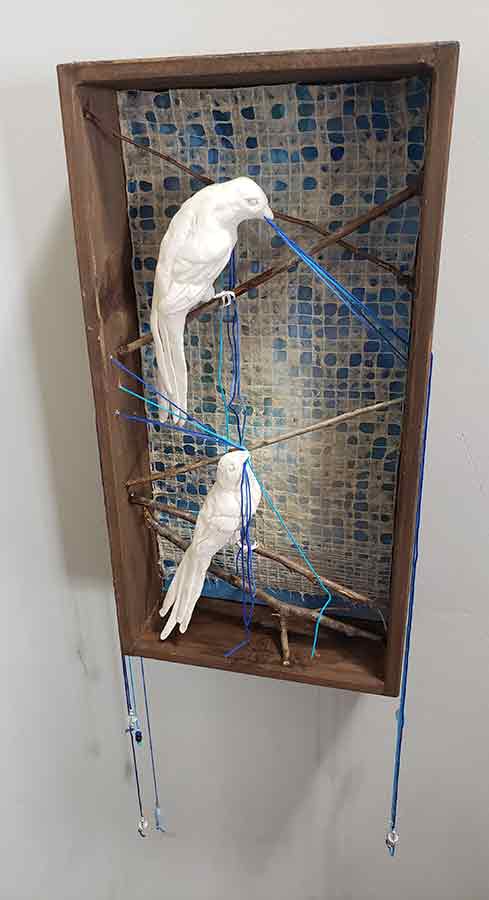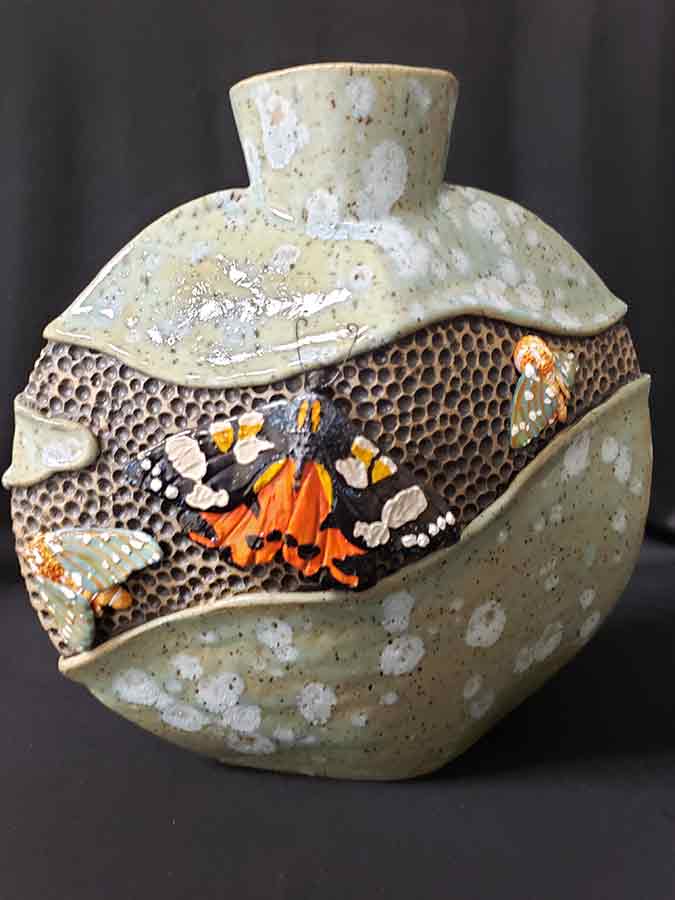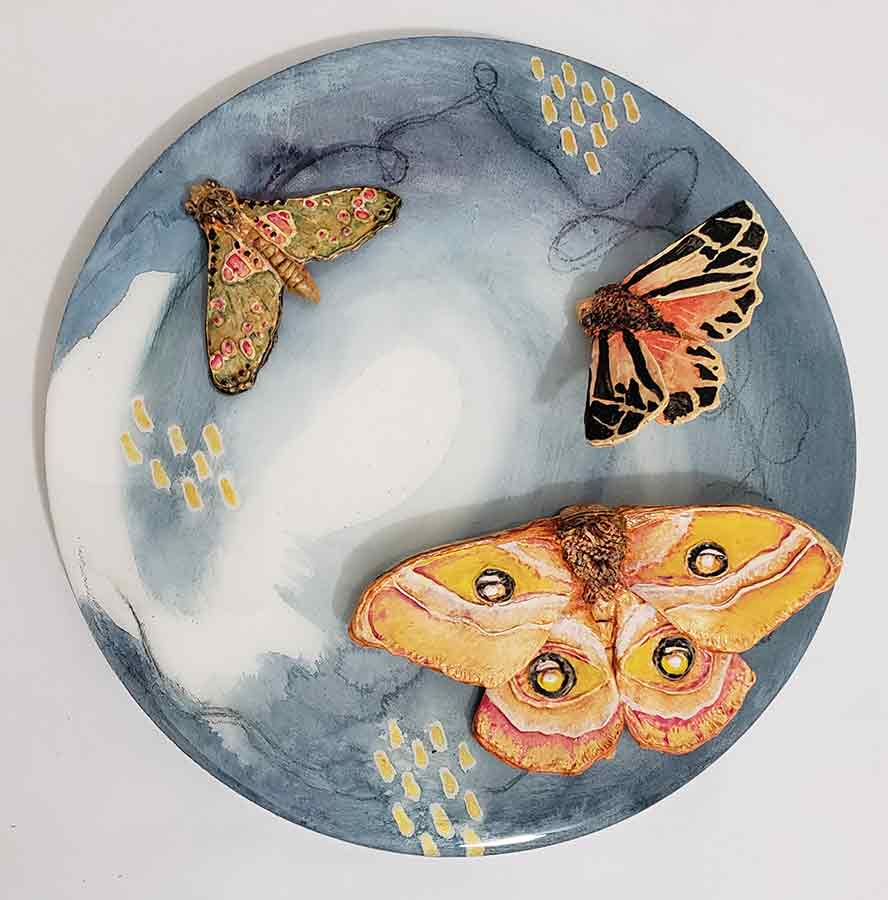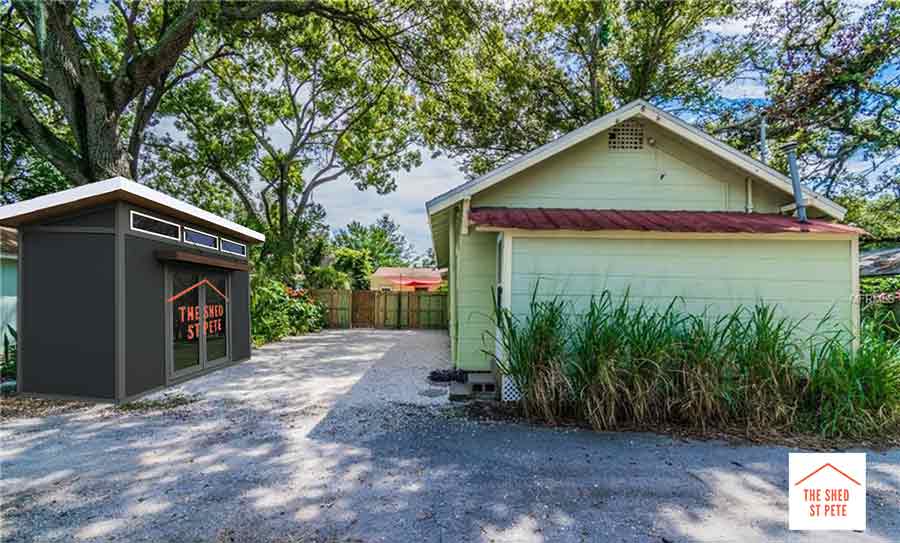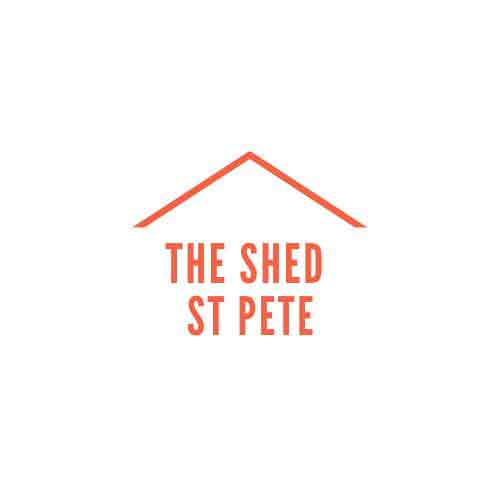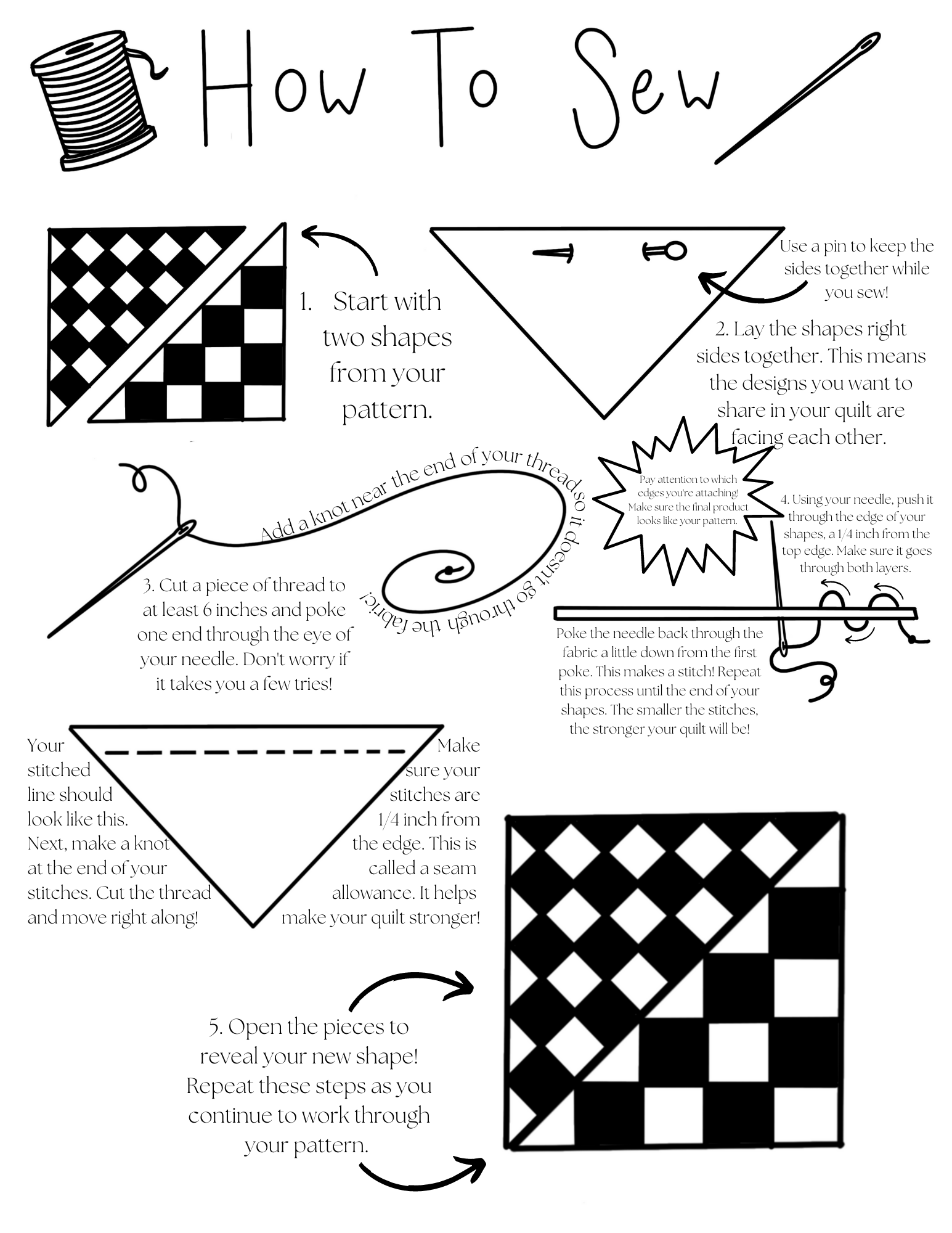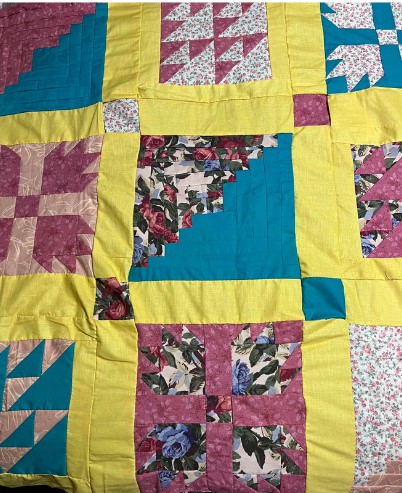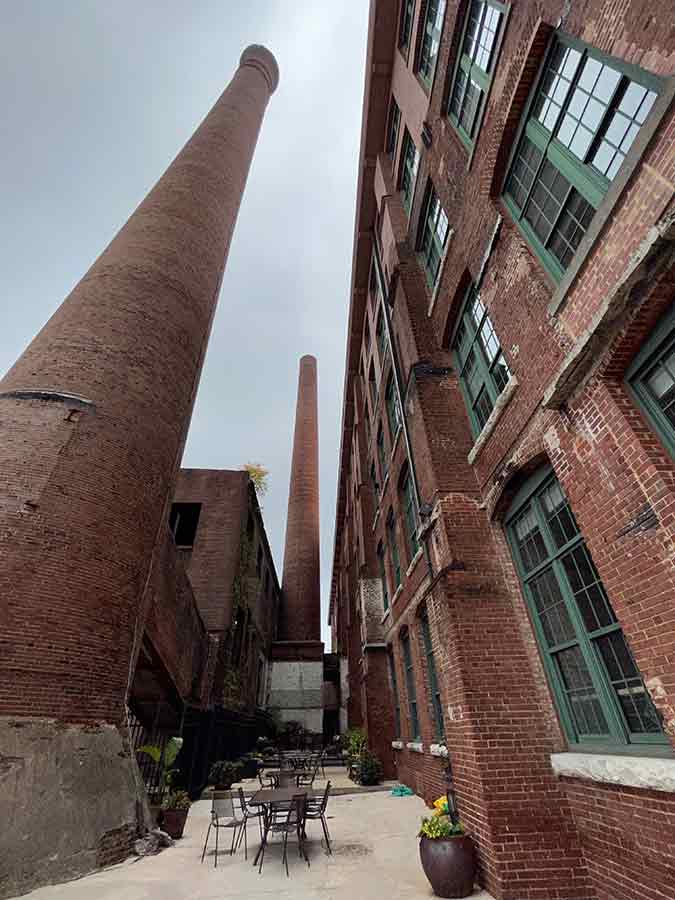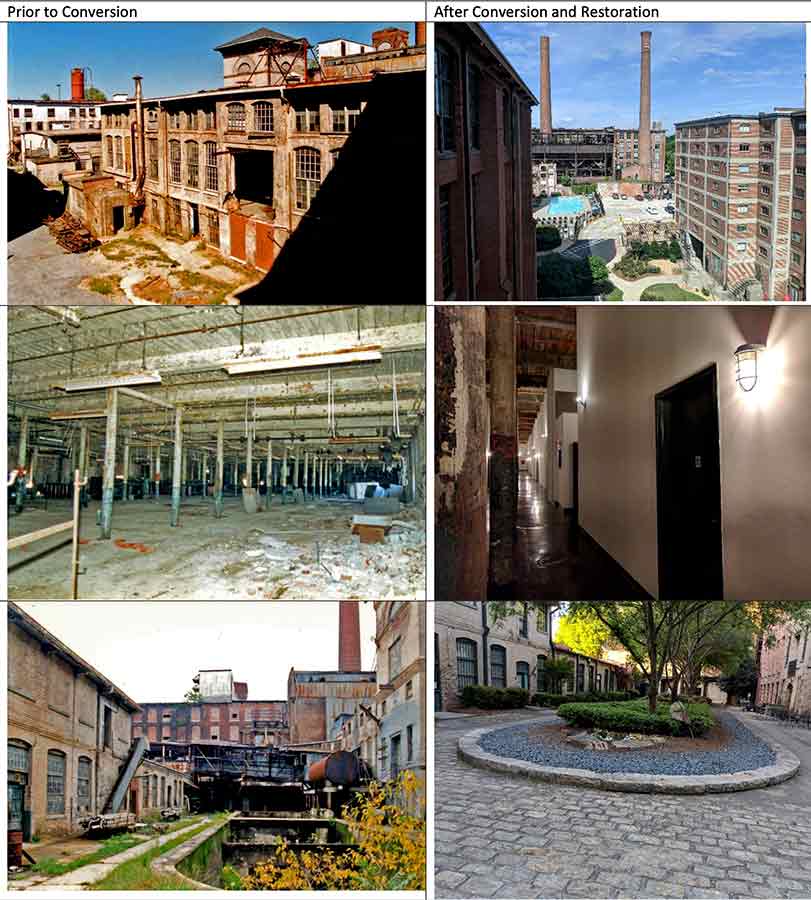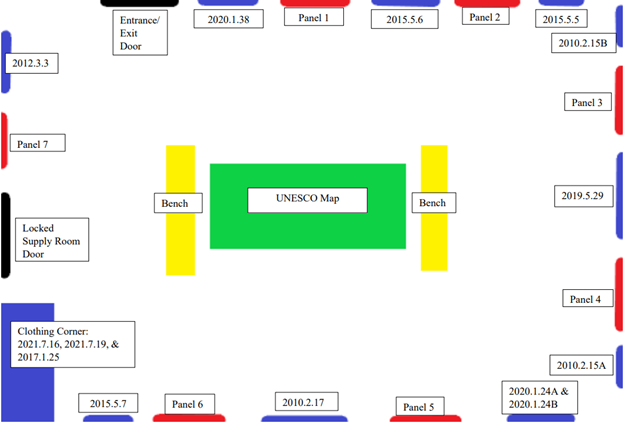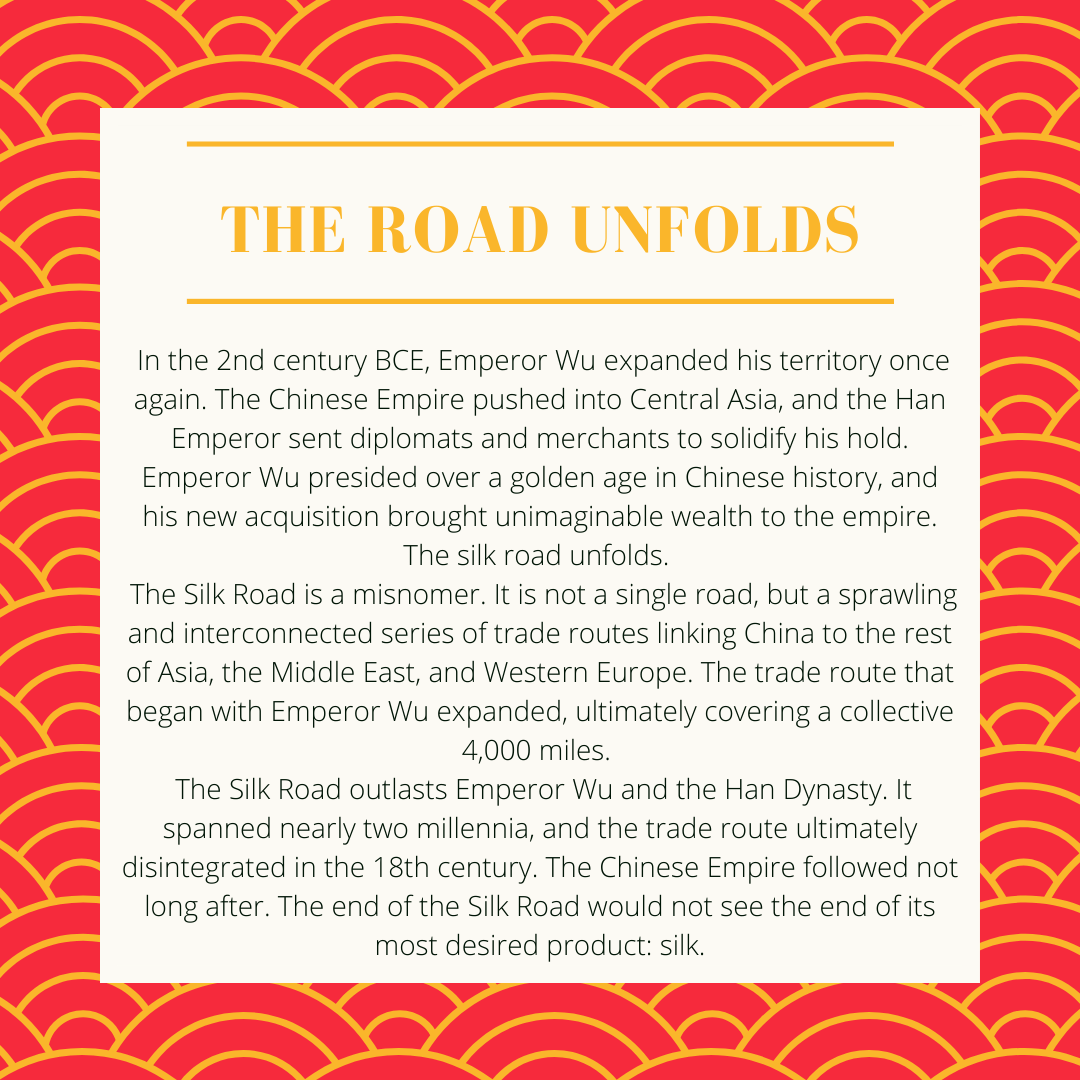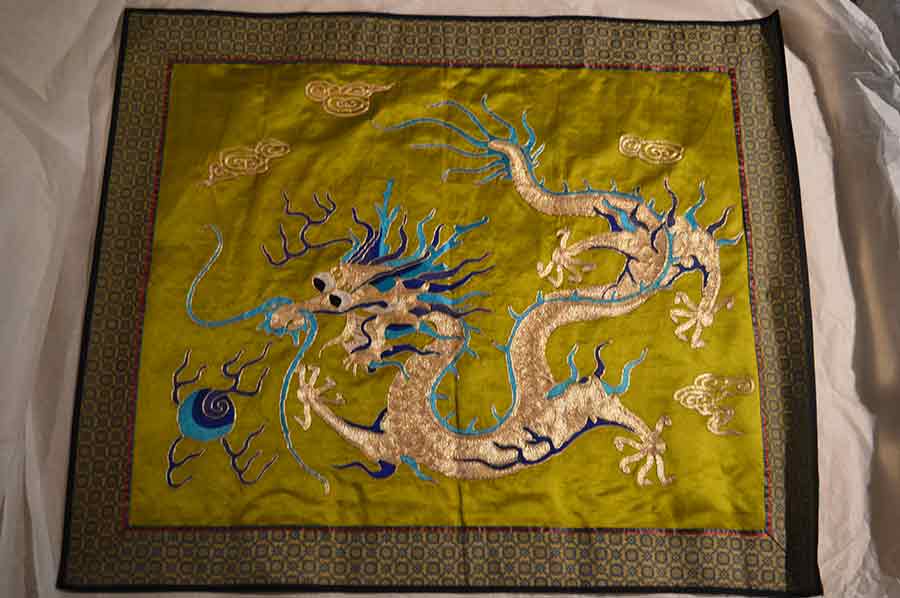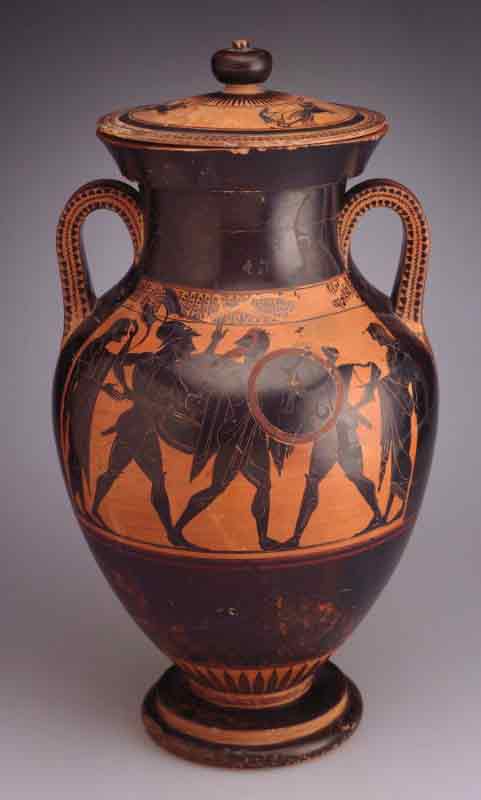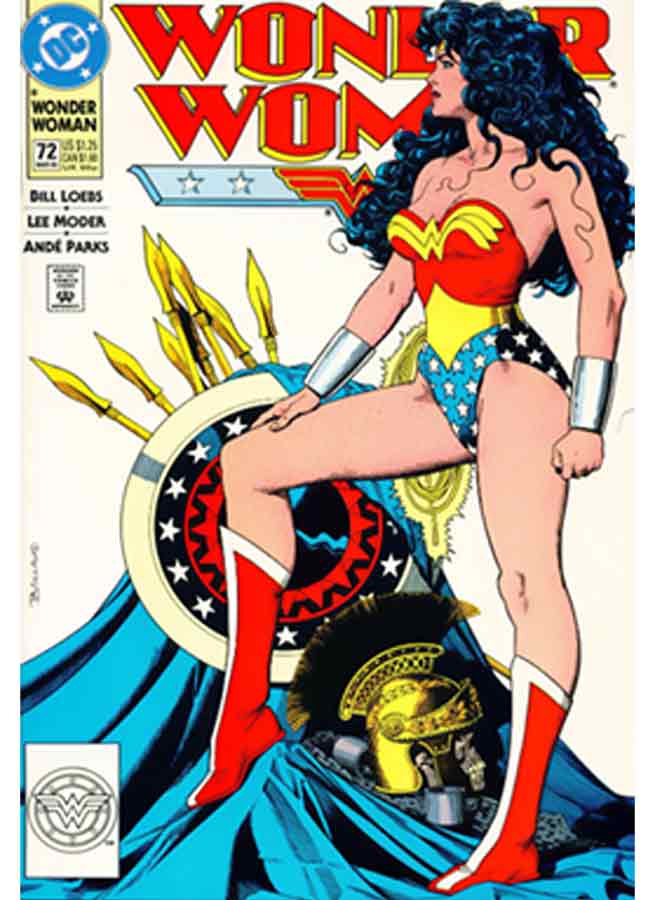
Capstone Exhibition Fall 2022 – Master of Arts in Art and Design
Art Education
Digital Animation
Museum Studies
Art Education
Erin Teets
This research aims to assume the roles of a/r/tographers. By engaging in an artistic collaboration, we wishto discover to what degree of personal and professional growth will result. This collaboration is to takeplace between Jenni Horne and me. We believe combining our perspectives, worldviews, and styles willresult in reinvigorated studio practices. New approaches to concept ideation, increased media versatility,and technical skills should produce evocative art pieces. We also feel it would increase our effectivenessas art teachers as evidenced by new approaches to classroom teaching. Within an arts-based researchdesign, we plan to establish a schedule/routine wherein artwork (including but not limited todrawings/paintings/sculptures/mixed media) is passed between us and worked on simultaneously. Ourdata collection will be in the form of documenting every aspect of the process (the making of, discussionsabout, and conclusions) through the photography of our individual and shared work, and transcribeddiscussions/critiques. As a part of sharing our findings, we will display the final body of work at ourcounty’s art center and provide pictures/photos/videos of our process in tandem with the finished piecesof work.
Amy Henke
A woman's identity evolves over time. Who we once were impacts who we become - our identities areever changing. As I think back on my growth from a young girl to who I am now as a mother, teacher, andartist, there were many points where I made decisions in my life that shaped who I am. Time,responsibilities, and obligations have the tendency to pull artists who have careers outside of artmakingaway from creative work. This project was completed in hopes of evaluating the vulnerability of digging into who I am as an artist and how being a mother and teacher impact my personal artwork. I workedmixed-media, focusing on ceramic components, and used symbolism to represent maternal love,commitments, and hardships related to being a nurturer of children. Journaling throughout the creationperiod of my project focused on artistic vulnerability and guilt associated with pulling time away from myfamily and job to provide that time to create; I tried to offer the empathy I give my family and students tothe artist in my heart and mind throughout the process. In total, I created twelve artworks along with asketchbook and journal to document the exploration of who I am today, as an artist who is also a motherand teacher.
Leanne Godbee
Attention Deficit Hyperactive Disorder (ADHD) is often perceived to be solely connected to a lack of focus.Individuals diagnosed with ADHD are sometimes considered to not be putting forth their best efforts withtheir tasks. Other individuals may think that these students are not challenging themselves. Stereotypessuch as these can leave a person feeling that they are not good enough. Neurodivergent students oftencarry heavy weights on their shoulders and are left with feelings of low self-esteem. Educators are notequipped to address the unique needs of students with ADHD, so it is often thought that parents use it asan excuse for their children or that the child is purposefully using bad behavior for attention. Studentsneed teachers who are educated about ADHD and trained in handling the behavior, lack of focus, andneed of constant stimulation. I propose that students who create a visual journal will find it useful inhelping them cope with their feelings and emotions. Visual Journals can serve as a form of social andemotional healing. I intend to prove that visual journals can be effective in helping students work throughtheir social and emotional struggles, and what effect this artistic process can have on those diagnosedwith attention deficit hyperactive disorder
Lauren Corder
This arts-based self-reflection paper informs the reader of the benefits of crochet for students andfaculty/staff in a trauma-informed school setting, as well as the results of the crochet donation project. Ina trauma-informed school setting, crochet could be a tool for students to self-regulate. Implementing sucha tool requires buy-in from faculty, staff, and additional stakeholders. Resources and behavioralmanagement practices are crucial for a school environment's success. During this project, participantscompleted the consent form and survey questions, crocheted for charity, and reflected on the process viajournal entries. The duration of the project and research lasted eight weeks, and Warm Up America is theselected charity for crochet donations. Giving back gives participants a sense of connection to the community and a significant and valuable experience to share with the students they may choose tocrochet. The hope crochet is nodt only implemented in the classroom for behavioral management but also to help the community and school district in meaningful ways for the future
Jordan Glastetter
The stories behind the historic homes in Roswell, Georgia, tell a compelling human and landmark storythrough the architecture, history, and humanity they represent. Like the influence of “Fallingwater” byFrank Lloyd Wright, a statement on his philosophy of organic architecture embodying art and natureendured throughout time. Even historic homes, such as Monticello, were designed and redesigned byThomas Jefferson to represent his time and way of life. Additionally, contemporary stories and homes infiction are equally attractive, as Waterford’s home in Handmaid’s Tale tells quite a futuristic dystopianstory. Even when I was young, I was compelled to research the Home Alone home as it represented anexciting story of its own in the Chicago suburbs. This new vision of historic Roswell homes will center onthe stories of women interpreted through my lens as an artist, a woman, and a mother. This new story willrepresent the history and legacy left to the community. The artist’s lens will represent clean lines andstreetscapes of historic Roswell houses that tell personal stories I can relate to through a fresh approachbeyond mere buildings, but more so buildings and the women that tell a rich story. This modern twist onprevious classic representations will be exciting and unexpected.
- Instagram: @jordanterese
Patricia Rausch
This study experimentally investigates the social-emotional mind/body connections students experiencewhen creating art with an empowering kinesthetic approach. The vehicle used in this research istraditional Western hand papermaking. "Breaking Rag" – the process of cutting cotton fiber into sizeablepieces which can effectively be beaten down into pulp through a Hollander Beater—"Pulling Sheets" ofpulp from a slurry made in vats of water and pulp using deckle and moulds as the customary tools in apulling process. The cotton used in this study was distinctive to the subjects' lockdown experiencesutilizing transportation bags (KC Bags) to and from school for learning materials, educational necessities,and enrichment supplies. These bags symbolized stress and strain on the students, parents, and teachersto maintain an educational standard in an unanticipated and beleaguered nine-month event. Acollaborative flow throughout the practice can provide students a safe and supportive non-invasiveenvironment to connect & communicate experiences directly related to the pandemic school closures andlockdowns. A mixed-methods project-based design was implemented to explore the influence this projectmay have on the potential of art-based strategies in future instructional learning and social-emotionalpedagogy design.
- Instagram : @patsyrauschpaperI
- Instagram: @kincaidartI
- Twitter : @kincaidart
Alyssa McClune
Maliah Hull is a visual artist and graphic designer from the Metro Atlanta area. Currently working towards a degree in Graphic Communications from Kennesaw State University’s School of Art and Design, she makes time to teach herself UI/UX as she loves to create and learn new skills.
Currently working as a Visual Design Intern at Acadia, a Graphic Design Assistant for Kennesaw State University’s Geer College of the Arts Marketing Department, and a recent Summer Product Design Intern at OkCupid, she is exercising her growing skill set of UX, UX Research, logo creation, branding design, website design, and illustration.
A member of Kennesaw State University’s Geer College of the Arts Diversity and Inclusion Committee and Vice President of KSU’s Graphic Design Club, Maliah loves being involved in campus. In her spare time, she loves watching comedy specials, drawing, and designing.
Laura Stowers
Jasmine Skeete
This reflection will focus on using expressive art-making to improve students’ mental health andconfidence in the classroom. The goals were to improve the outcomes and practices of art programmingwithin the school community and help teachers serve their students better through art-makingexperiences. Expressive art was used to provide a non-objective approach to students creating throughtheir emotions and impulses. Student reactions and self-reflections were documented while students usedvarious materials to create expressive artwork. The project happened over 2 class periods and concludedwith students hanging their artwork up in the hallway to share with the school community. The purpose ofthis research is to identify any benefits from the art-making that might influence their mental health,confidence, and choices outside of the classroom.
- Twitter: @Letsgoghskeete
- Instagram: @Letsgoghskeete
Karla Noble
Rural communities are a uniquely necessary part of the state of Georgia. Urban migration and dwindlingpopulation have prompted the state to take notice and proactively strategize to support these regions.There is a general lack of research on Georgia's art education numbers with the differentiation betweenrural and nonrural areas. This interpretation of the data collected from the Georgia Department ofEducation provides a short-term understanding of the status of art education in rural schools compared tonon-rural schools. Funding from the federal government has offered a unique opportunity to createchange. Recent policies prompted interviews with state agencies to understand Georgia's plans toimprove the arts in schools. This research establishes a need for artists and creative individuals in ruralcommunities to provide additional economic benefits. This need, federal funds, and compellinginformation about the benefits of arts instruction on students' educational outcomes and well-being drivethe movement for more art access in rural schools.
- Instagram: @karlagnoble
- Facebook: @artistkarlanoble
Taylor Guilloud
This project focuses on the idea of mindfulness and how that can be incorporated into the art classroom.Mindfulness is when a person is aware and mindful of their thoughts and actions. The end product of thisproject will be a comprehensive middle school art unit that includes the practices and ideals ofmindfulness. This unit, however, will not stray away from the typical curriculum and techniques found in the average art classroom. This will be a way to bring mindfulness and growth into the art classroom whilestill teaching to the standards. This project will also include how mindfulness can benefit classroommanagement in the art classroom.Included in the lesson will be five lesson plans that will be shared on Google Drive and utilize the Googleapps. For each lesson plan, all teaching materials such as worksheets, PowerPoint, videos, artists,artwork, examples, etc. will be provided. There are so many resources on mindfulness and the classroom,I wanted to create a one-stop shop for some of the approaches that would work best in the artclassroom.
Sara Stickle
Tammy Fitts
-
Kenneth Davis
During my time in undergrad art school, I dismissed the idea of teaching art. My professor would tell me,"You'd be a great still-life artist or teach others how to do it." I thought to myself, that wouldn't make anymoney. I had dreams of being an Art Director of a big company. I loved fashion and would look at fashioneditorials in Harper's Bazaar. The fantasy and creativity displayed fascinated my senses. I fell into visualmerchandising in the retail industry and quickly advanced with my eye for detail and constructingdisplays. After years of being burnt out and feeling empty, I was almost ready to give up on my desire tobe creative for a living, leaving me with self-doubt and a lack of motivation. A shift was when a classmatefrom undergrad suggested I'd be a great teacher. I thought, "me a teacher?" No. But deep down, thesuggestion appealed to me. I knew that jumping into an art classroom would be demanding andrewarding. I realized I love doing this. Feelings of helping more than hurting poured into my heart, and mygifts and skills now had a purpose. I pushed myself to be in an art classroom to lead and encourage thenext generation to be creative thinkers in our society.Here Goes Nothing Being hired three weeks before school started was stressful. The HR process took longer than expectedand married its way into the first week of school. With practically no time to prepare my classroom, meet colleagues, and arrange a meeting with influential people in the school, I was nervous and excited. I got avisit where I could feel how the classrooms looked and spent some time looking at the space to imaginehow I would arrange the furniture, which made me feel excited about what was on the horizon. I compiledideas and valuable links over the summer that I scanned the internet for during the waiting process. I alsostocked up on fun and unusual items in my studio and outdoors in my yard. My first day came, thesecond week of school, which started with a busy full staff meeting. The meeting was full of muchinformation I had no prior knowledge of. I was clueless. The only thing I could think of was my classroomnot being ready. What would the students think of me? Which mini-lesson I prepared for would be best tostart first? All these thoughts rambled through my head until I suddenly heard the principal say, "Let uswelcome our new Art Teacher, Mr. Davis! We are so excited to have him with us this year!" I froze with thisunexpected introduction. I stood up and said, "I am thrilled to be here and ready to create some amazingart with the students." I left the meeting ready and feeling good from the warm welcome As the day progressed, my assistant principal informed me of my morning and afternoon car rider duties.Fortunately, I had two planning days to prepare my classroom before my first class. I thought the mood ofmy classroom should be an inviting, imaginative space that allows creativity to flourish. This mood is myclassroom climate, and how I decorate the entrance and organize materials reflects me as an ArtEducator. In A Handbook for First Year Teachers: Ready, Set, Go!: Ready, Set, Go! Memory L. Schorrdives into the importance of preparing and creating a unique classroom. According to Schorr, "Theclimate you create will speak to everyone who enters your room and will attest to your philosophy ofteaching, life, and interpersonal relationships long before you utter your first words" (1995, p.1).I created colorful and bright labeling to identify storage areas around the classroom. For example, cubbiesthat housed students' unfinished work and bins with art supplies would help students during the cleanupand transition to the next class.
Show more
Breanne Cox
Social-emotional learning (SEL) is the current buzzword in education, though the concept is nothing newin visual arts curriculum. Social-emotional learning as defined by CASEL, 2021 para 2, isthe processthrough which all young people and adults acquire and apply the knowledge, skills, and attitudes todevelop healthy identities; manage emotions and achieve personal and collective goals; feel and showempathy for others; establish and maintain supportive relationships, and make responsible and caringdecisions.
Reflecting on my educational practices in the high school visual arts classroom, it is evident that I alwaysinclude some aspect of SEL in my curriculum. In seeking to create a curriculum based on the fivecompetencies of SEL – self-awareness, self-management, social-awareness, relationship skills, andresponsible decision-making (CASEL, 2021), I discovered that each lesson inherently incorporates two ormore of the competencies.
Self-reflection allows me to create a learning environment that is safe, understanding, andconducive to learning. Writing lessons that center on SEL in the visual arts not only encouraged self-reflection through visual media but also revealed my personal need to use own my SEL musclesconstantly. I completed artwork loosely based on lessons that rely heavily on SEL.
- Instagram: @bcox.art
Digital Animation
Sedriauna Simpson
The purpose of Animation Station is for it to be a place where educators, students, animators, andanimation enthusiasts can have access to tools and information so that they can incorporate animationinto primary and secondary schools or to further their knowledge of animation.The goal I have forAnimation Station is to spread awareness of animation throughout Georgia school systems by engagingwith the public school system through volunteer work, speaking engagements, tutoring, and teachinganimation as an art teacher. The presentation video of Animation Station is to be used as a “hype” videoto get school systems interested in funneling more money into the arts so that art education teachers canget the materials they need and professional development that will help them introduce animation to theirprimary and secondary students. Animation is a wave that's only going to grow in size as digitaltechnology and arts grow and should be embraced because it is a multilevel field with many careerpathways so there will always be a place for artists and animators in the now and the future.
WebsiteCheryl Meier
The CanAIRy story is about a young coal miner named Hal who lives in a 1920s eracoal mining town. Hal’s job in the coal mining town is a canary trainer. He currently hasfive canaries in training, all of which are doing a great job, except for one ... Oliver.Oliver is lazy, has asthma, a terrible case of anxiety, and is everything you don’t want in a mine canary. The story arc includes a bit of humor and chaos as he stumbles his waythrough the training, but in the end, he becomes the unlikely hero. This project involvesworld building of this story through the art of 3D computer animated modeling.The goal of this project was to build in 3D five props, the interior and exteriorenvironment set, and the two main characters. After a period of extensive research,which included a trip to an exhibition coal mine in Beckley, West Virginia, productionbegan by building out the props. After the props were completed, I moved on to buildingthe interior and exterior set, which took up the majority of time due to all the componentsthat needed to be built. I finished out the project by modeling the two main characters.
websiteWrisa Waymer
Minorities: Healthy and Happy living: Using animation to inform educate and bring awareness to everyday strategies that everyday people canuse to create a healthy, happy everyday while living with various mental illnesses. Ethnic minorities anddiverse lifestyles will be represented in animated illustration to depict who they are and how they impactmental illness and provide tools ideas for overcoming a range of illnesses. Minorities will be used torepresent the cross section of people impacted by mental illness and will include, Latinx (including PuertoRicans), African Americans, Asian Americans, Arab and other Middle Eastern Americans, NativeAmericans, Native Hawai'ians and other Pacific Islanders, and Alaska Natives. I will create animation toshowcase how to cope with everyday life which will include writing in journals, practicing mindfulness,walks in nature, spending time with pets and friends, exercising, cooking and practicing Working Title:Minorities: Healthy and Happy Living
Abstract: There is a need for this project because there is a need for all people to understand and learnhow to cope with mental health. However, it is even more important for ethnic minorities because stigmaremains a barrier for ethnic minorities to receive help for mental illnesses and addiction. Because they do not get the help needed, their mental illness and or addiction impacts their lives in a negative way as wellas future generations. Data suggests that 48% of white Americans receive treatment for their mentalhealth while less than 31% of African American and Hispanics receive treatment and less than 22% ofAsian Americans receive treatment. This disparity in treatment is because of cultural stigmas, the lack ofavailability, the belief that mental health treatment is not effective or culturally relevant and the cost valuerelationship of mental health treatment. The high level of mental health stigma in minority populations andmental health systems is a primary barrier to treatment. Another barrier is language barriers as there areinsufficient numbers of providers who speak languages other than English. As well, bias, anddiscrimination in the treatment setting can hinder the process of ethnic minorities receiving the careneeded to live happy and healthy lives.
Website Demo ReelMuseum Studies
Bryant Long
Ethnographic research was conducted to explore cultural sites in New Orleans, Louisiana related toVoodoo. Vodun has a large following in Africa and migrated across the Americas. My West Africanheritage is the reason for exploring the research, attempting to learn about my own ancestors.Researching heritage sites included literature review and field research. The field research conductedinterviews, tours, and hands-on experience. Notable sites and figures included in the research are MarieLaveau and Congo Square. The numerous sites in New Orleans offer a rich cultural experience andcontinue to this day. I explored the sites and conducted immersive experiences to understand the culturaltraditions of legitimate Voodoo practitioners.
Amy Henke
A woman's identity evolves over time. Who we once were impacts who we become - our identities areever changing. As I think back on my growth from a young girl to who I am now as a mother, teacher, andartist, there were many points where I made decisions in my life that shaped who I am. Time,responsibilities, and obligations have the tendency to pull artists who have careers outside of artmakingaway from creative work. This project was completed in hopes of evaluating the vulnerability of digginginto who I am as an artist and how being a mother and teacher impact my personal artwork. I workedmixed-media, focusing on ceramic components, and used symbolism to represent maternal love,commitments, and hardships related to being a nurturer of children. Journaling throughout the creationperiod of my project focused on artistic vulnerability and guilt associated with pulling time away from myfamily and job to provide that time to create; I tried to offer the empathy I give my family and students tothe artist in my heart and mind throughout the process. In total, I created twelve artworks along with asketchbook and journal to document the exploration of who I am today, as an artist who is also a motherand teacher.
Liliana Said
The Shed St. Pete as an alternative exhibition space in the Artist Enclave of Historic Kenwood in St.Petersburg, Florida, is a project designed as a platform to help emerging artists produce and exhibit theirwork. The Shed St. Pete would inspire creativity and encourage a change in the status quo for emergingartists. In addition, cultural programming such workshops and lectures would reinforce its mission tostrengthen the community’s social ties. The project would be located in a distinctive area named an "ArtistEnclave" in a city that has become an arts scene destination with its museums, collections, art festivals,and art events. The Shed St. Pete is a small but much-needed project to support emerging artists,reinvigorate social interactions, and help boost the economy.
Lexi Brendel
Whether offering warming comfort as a child drifts to sleep or acting as a practice ground to hone precisestitchwork, quilts and the art of quiltmaking span centuries and continents. These objects not only act ashousehold essentials but they also provide a common goal that communities, such as those in SouthernAppalachia states of Kentucky, Tennessee, the Carolinas, and Georgia, work together to complete. Thisproject aims to present a succinct history of quilting in relation to building community structures andprovide lesson plans for instructors or museum professionals to share this information with childrengrades kindergarten through eighth in conjunction with potential museum exhibitions or online collections.In order to understand the necessary components to include in the two lesson plans, research into thehistory of quilting trends and methods in this mountain region was conducted with primary sources andpeer-reviewed journals. This research stage concluded that many members of Appalachian communitiesbuild connections between neighbors and different generations through sharing quilting knowledge aswell as identifying key quilt patterns. Based on the idea of a Friendship Quilt, a blanket made of squaresmade by multiple quilters and combined into one quilt, students have instruction to create either a papersquare or a fabric square depending on grade and maturity level. The final graduate product supplies museum professionals and school teachers with the history report for their understanding and lessonpackets, equipped with Georgia Education Standards, detailed instructions, student handouts, finalproduct examples, and additional resources to teach students about Southern Appalachian communitiesand their bounding practices using quilt making arts.
- Instagram: @vintagearsenicdesign
- Facebook: @vintagearsenicdesign
- Linkedin: www.linkedin.com/in/lexi-brendel-073b83b9
Nina Elsas
When a building has reached a dilapidated state – as did the industrial structures throughout the FultonBag & Cotton Mills compound – options are limited. In general, the structure can either be demolished orrehabilitated. Fortunately, a decision was made to convert the majority of Fulton Bag & Cotton Mills’buildings into lofts, which many considered a financial risk. The research related to this study aims toaddress whether a renovated Fulton Bag & Cotton Mills – and the management of its cultural heritageassets – could identify as an open-air museum. In brief, AEOM (Association of European Open-AirMuseums) defines an open-air museum as a distinct type of museum that displays preserved objects,such as buildings, in an outdoor environment. If today’s cotton-mill lofts fall into this definition, then whatdoes that mean for the residents who are the stewards of this historical site? The mill’s history should beshared, but currently fails as a public history site due to the fact that the community is gated, limitingaccess to residents alone. This thesis will reveal the impacts of creating an open-air museum, thesubsequent favorable effects on the gated community, and the benefits to the neighborhood as a whole.
WebsiteMiranda Helton
Adanna McAllister
This exhibition juxtaposes Classical Greek art with Modern Comics in an effort to show the similaritiesbetween the two seemingly unrelated forms of art. The theme of this exhibition will be focusing on thesubject of Heroes, individuals with superhuman abilities, as it is a common theme in both mediums. Wehave been telling stories of great heroes and their adventures for thousands of years and as such, theyhave become ingrained in our society. These superhuman stories have appeared throughout history oftenin the form of Sequential Narrative art, an art form that uses images arranged in sequence for the purposeof telling a story or conveying information. This exhibition surveys the way sequential art has evolved thetime of the ancient Greeks to today and along with it, how the idea of heroes has evolved along with thisnarrative art form. The goal of this exhibition is form connections between these artworks separated bytime and to show comics in a new light in an effort to elevate the medium.











